- Dave Clawson, Head Coach, Wake Forest University Football
|
Life Advice, Career Development, Opinion, Sports! November brings with it a host of collegiate and professional sports taking place in the United States from American football to basketball and hockey. Being a sports fan is a complex endeavor that can be both painful and joyous. Depending on the resources and talent on your favorite team they may be more or less likely to win games or an eventual championship. But anyone who has watched a few sporting events knows that sometimes (even often) the team that is favored to win doesn't for a variety of reasons including mistakes, luck, and an opponent being better on that day. Winning is both difficult and unpredictable. I grew up as a Wake Forest University Demon Deacon fan as both my parents went there. My sister is also a Wake alumnus and lives near the campus, only a few hours drive from my current home in Southwest Virginia. As such, for the past few years I have been to many Wake games with her and witnessed the highs and lows of fandom. In 2021, the Wake Forest football team won 10 games (out of 12) in the regular season and advanced to the Atlantic Coast Conference (ACC) football championship game. It was an amazing season for a school with the smallest enrollment among institutions competing at the highest level of collegiate football in America. Despite what was objectively one of the best football seasons in Wake Forest HISTORY, there were still 3 losses that took place that year including in the ACC championship game itself with my sister, her boyfriend, our tailgate buddies, and myself present to witness it. That loss in particular still stings. We all know from behavioral economics that losses loom larger than gains and indeed any sports fan can tell you that losses stay with you longer (and eat at you more as you play the "what if" game) than the highs of a win. While 2021 was an amazing football season for Wake Forest, 2023 has been a struggle. A team that has been so offensively gifted the past few years has had a difficult time scoring in 2023. At the college level players graduate and leave and so some variability in results is to be expected. Regardless, watching "your team" make mistakes and struggle is challenging. You can see the players are putting in effort but the results are just not there. You hope they continue to commit to the work of getting better, gelling more as a time (chemistry between the players is important), and realize that next year things can be different. However, a variety of factors in modern day college sports makes commitment of players more elusive than it has ever been. Seismic Changes for American College Sports Landscape The modern college sports landscape has introduced an interesting set of incentives that have cast a spotlight on what an athlete gets from their experience playing for a university. It used to be that an athletic scholarship and the chance to build skills and a resume that made one competitive to be selected to join a professional team (and get paid a professional athlete's salary) was what a prospective college athlete could expect. Now, in the revenue-generating sports of college football and basketball mostly male athletes have the ability to get paid for the use of their name, image, and likeness (NIL). In theory this sounds like a great idea as historically colleges with large fanbases generated millions of dollars in revenue from the efforts (and results) of their collegiate players who did not themselves reap many financial benefits despite the risk of playing physical and often violent sports. Practically, though, the ability for players to receive NIL compensation has become a "pay for play" arrangement where the most promising players are offered serious money (especially for a soon-to-be high school graduate) to come play on a university's team. As you can image, institutions with more resources are able to offer more to these high school prospects than those with smaller fanbases, less wealthy donors, or less lucrative media contracts. Yes, there are a set number of scholarships a school can give out so it is not possible to hoard talent in pure numbers but NIL has allowed for some of the best talent to concentrate at a select number of institutions. And NIL is perhaps even more "effectively" used in combination with the "transfer portal", which allows players already on a collegiate team to express an interest in potentially leaving the team for a "better" opportunity. Again, in theory the transfer portal seems like a good idea. Allow collegiate players who have yet to find the right "fit" to be able to change their environment such that they can get the coaching and experience they need to develop and grow. And if someone is graduating from their current institution and seeking to enroll as a graduate student at a new institution that isn't all bad in terms of the educational and professional development. However, when coupled with NIL offers the transfer portal allows for more well resourced teams to potentially "poach" players from teams that are either underperforming and/or under-compensating their current scholarship recipients. Growth in transfer players on college football bowl subdivision rosters from 2019 to 2023 was >220% (from 6.4% to 20.5% of rosters), indicating this mechanism is becoming a more popular way for teams to upgrade their talent. Don't Quit Just Because Things are Hard Personally, I also believe the current system makes it easy for players to "quit" on their current team. Things not going well individually or as a team? Not getting the playing time you want? Feel like the coach is showing preference in terms of increased playing time to another player that you think you are better than? Put your name in the transfer portal in December and look for greener pastures. But is such an action what is ultimately best for these young men? The individual player challenges mirror larger team challenges and fanbase angst over "winning". In sports, unlike many other aspects in life, there is an objective record of outcomes associated with a team each season: wins and loses. The Fine Line Between Winning & Losing A game that can run 3-3.5 hours in length for college football is eventually reflected in a single win or loss. There can easily be 80 plays per team with 22 players (11 on offense and another 11 on defense) on the field for each of them. While every player is not directly involved on every play for simplicity let's run the math assuming all 22 play a part in every play (which is more true than the casual fan realizes). This calculates to over 3,500 individual "actions" occurring in a single game. 3,500 actions and easily 80 total players involved per game. A game that again is ultimately reflected in a binary outcome: win or loss. If you watch American football games for any length of time you begin to observe that the line between "winning" and "losing" is incredibly thin. Literally one or two plays out of the 80 or so each team runs can change the outcome of a game. So when one team wins and another loses, what really is the difference in talent and effort between them? Sometimes very little and sometimes a lot. One also must acknowledge that talent and effort alone don't determine outcomes. Luck is a factor for sure. Does a defender fall down and allow an offensive player to be open down the field for an easy touchdown pass? Does a sudden gust of wind knock a ball off course preventing a field goal kicking attempt from being good? And what of the opposing team's effort? Fanbases will sometimes be so fixated on their own team that I think they sometimes forget that the other team has players who also want to win. So, your favorite team's success is not based completely on their own effort as they are playing against individuals who are also exerting effort and seeking an outcome (ie, a "win") that only one of you can obtain. And there are games where clearly the opposing team is just playing better or worst than your team, which will ultimately influences the outcome. Development & Growth as Different Measures of Success I say all of this to make clear that while teams are often judged on their record (ie, wins vs losses), these numbers cannot capture the effort of players, level of competition, and luck. A sensible fan should then not be so obsessed with these numbers but rather look more closely at the effort players are exerting. Players make up teams and with experience and development they can become more effective in their roles that will ultimately give one's team a better chance to win in the future. This is predicated on these players continuing with your team and committing to put in the work to get better over the years. Wake Forest University's football team has been one particularly focused on developing its players with many "redshirting" (ie, not playing their 1st year) to allow them to remain eligible to be on the team for 5 (versus the usual 4) years. Most new additions to the team spend their first year practicing and learning the plays but never actually playing in a competitive game. This is the ultimately illustration of delaying gratification, realizing that the work they put in will often not be put on display for a year (or more!). This developmental model faces considerable headwinds in our modern era and the current collegiate sports environment. Will a freshman player with considerable talent and expectations be willing to wait their turn and trust the developmental process? What is even the goal of playing on a collegiate athletic team? I mentioned many embark on this trajectory with the hopes of playing professionally but very few college players will "turn pro". So, while it seems to the external observer that the goal of playing in college is to become a professional athlete, the actual value in this experience is in the development of critical skills (leadership, dedication, hard work) for succeeding in the world after college. Furthermore, playing a college sport provides one memories that last a lifetime. So, it is the JOURNEY of practicing, playing, and competing at the college level that matters most to most individuals rather than the DESTINATION per se. The phrase "focus on the journey not the destination" may be a tired one but that doesn't make it untrue. Results and outcomes are fleeting moments in time boiled down to numbers on a ledger X wins, Y losses. The experience of being on a team, forming bonds, and working toward a common goal is a rich one. A memory that will last and often ages well...many players come back to their alma matters many years later proud of their efforts playing on a past team. Relation to Career & Professional Development Chris, this blog normally focuses on career and professional development topics. What does all this sports talk have to do with that? A lot. First, most students and younger employees are seeking to grow and develop skills that will make them more marketable in the future (just as a college athlete is trying to develop skills and experiences for a professional career). Many will encounter challenges in these roles and setbacks are expected. Perseverance is key. Not giving up when things get touch at school, at work, etc... but realizing that through challenges comes personal growth and development. Similarly, many of us focus on professional outcomes and not the process of developing as a professional. Just because you didn't get that promotion or land a new job doesn't mean the process of honing one's skills and revisiting and highlighting one's accomplishments aren't worthwhile in and of themselves. In each competitive endeavor we undertake professionally the outcome may be binary - winning or losing - but we must look beyond that. Similarly a true fan must get past measuring "success" in wins and losses. Wins and losses are an external scorecard that cannot account for personal growth or internal state. We can lose but learn in the process. We can lose but know we are getting better and closer to a "win", even if we cannot completely predict when that win will come. If we all focus a bit more on the process of personal growth and fulfillment versus looking at external measures to define success, we would all be better off as fans and professionals. You can't fully control if you "win" or "lose" but you can determine your mindset (if not always your mood). Certainly losing sucks and no one likes it. But being more reflective on an experience may allow us to take something positive from it regardless of the outcome. We may have lost the game but the defensive is playing better this year and hopefully the offensive improves next year as well (in the case of Wake Forest football). We didn't land that job we really wanted but we were reminded of all we have accomplished and have to offer our next potential employer. The Internal Scorecard I believe the key to moving from an external scorecard to internal growth is via personal commitment to our own development and not allowing factors external to us (and often outside our control) to govern how we feel about ourselves. This is a hard thing to do but we all would be better off adopting this mindset. And we can't give up when things get difficult. Success means more if it is achieved through overcoming adversity. According to the professor and author Arthur Brooks, satisfaction is "the joy of accomplishing a goal with effort" (learn more about the art & science of happiness in the TEDx Talk featuring him, below). The with effort part is important as it is achieving something through striving and overcoming obstacles and challenges that is rewarded in our physiology and psychology. You won't be satisfied if you always take the easy way out and don't commit to doing the work to get better at your craft (as an athlete or professional). This past Saturday, Wake Forest played its last football game of the season at Syracuse and I was down at my parents house for the US Thanksgiving Holiday. Typically my Dad doesn't like to watch the whole game as it makes him nervous but we did turn it on with about 5 minutes left in the game. Wake was down but had a chance to go ahead with a score. They had scored more points in this game than any against conference opponents and had a relatively new player in leading the team at the quarterback position. We were excited to see the team executing on offense for a change as they moved the ball down the field. In the end, it came down to one play where the team couldn't get the ball in the end zone. But how exciting to witness what the players were capable of. We were proud if disappointed in the outcome. That performance gave us hope for next season. And the post game press conference summed up our thoughts on really the whole season: "I am not happy with our record but these guys showed up everyday, they prepared hard, they practiced hard, they played hard down to the final play....I understand we are expected to win football games and we accept that expectation but I am proud of our players." - Dave Clawson, Head Coach, Wake Forest University Football In the end, winning is great but it certainly is not guaranteed nor should it always be expected. Rather, relying on our own internal scorecard (a term popularized by the legendary investor Warren Buffett) and knowing work is being put in that will pay off is critical. In an ironic way the next win will mean more because of the past losses it can be measured and contrasted against. This is also true in our professional and personal lives. After all, satisfaction, according to Arthur Brooks, only occurs when an accomplishment is achieved through effort. And so we all should seek to improve, to strive, to develop ourselves because we know that is winning at a personal level and no external force or factor can take that away from us. More from the Blog: Additional Reading:
0 Comments
Life Advice, Personal Perspective, Job Search, Career Development With near infinite distractions and choice available through modern technology, humans are often left adrift and detached from reality. While we think escape from life's hard problems is the answer, ultimate satisfaction usually comes from commitment and the overcoming of challenges. Dedicated: The Case for Commitment in an Age of Infinite Browsing by Pete Davis is a book that I think captures our current societal state while offering insights on what can be gained from commitment to causes bigger than ourselves. In the book and his 2018 commencement speech at Harvard Law School that inspired it, Davis laments we, especially younger adults who were raised with the internet, smartphones, and on-demand content, are stuck in "Infinite Browsing Mode." This state, facilitated by technology, leaves us swiping through endless choice, content, and information and often paralyzes us from commitment. It may be most apparent as an issue in examples like browsing Netflix for a show to watch or scrolling through countless dating profiles on apps like Tinder and Bumble but it goes beyond this. It has permeated our society and culture and leaves people either afraid or unable to commit. Solving the world's biggest problems requires action not passive "browsing" and people would be on the whole happier and healthier if they detached from their screens and engaged with the physical world. Making the effort to commit and live in the physical world is hard. It requires vulnerability and courage and a willingness to forego the easy but often unfulfilling online world for a messy, challenging, yet beautifully flawed "real world". The book highlights three fears that stand in the way of making commitments:
I find the third point interesting as the author defines this as the worry that commitments we make will threaten our identity or sense of control. He mentions, and I agree, that there is a "messiness to working with other people" and that no organization, institution, group, employer, etc.... is going to perfectly match the characteristics we might desire and/or feel perfectly aligned with who we are. It is certainly "easier" to remove the messiness of working with other people from one's life but it would lead to a less fulfilling experience. You can imagine that when we have a choice about whether to associate and work with others we may be even more hesitant to do so given this fear of association and all the challenges interpersonal relationships (even professional ones) have. But removing other human beings from our professional and personal lives is not the answer. We are a species who evolved to cooperate (and also compete & fight). It is core to our humanity and despite the challenges of working with others, it is something we cannot and should not excise from our lives. In last month's post I spoke to current challenges in volunteer engagement with non-profit organizations across the United States. I see how this could be the result of individuals' fears of association mentioned above. Why would a person who already sees the challenges of working with others in their professional or personal life choose to work with even more individuals in a volunteer capacity? Why add more stress and potential interpersonal conflict to one's plate when you aren't paid to deal with it? How can you effectively work with and motivate individuals in these settings where no compensation is tied to their engagement? These are certainly valid points and challenges non-profit organizations have always faced. The difference now, though, is that potential volunteers have so many options to occupy their time and even activities that may make them feel like they are making a difference. Sharing one's reactions and concerns on social media requires a few clicks on a keyboard or screen and can leave one with the impression that they have "done good". And certainly, engaging with organizations and causes online can be effective and useful in its own way. Nothing, however, replaces true engagement in a cause or organization and the satisfaction that can come when working with others towards a common objective or goal. Breaking out of "Infinite Browsing Mode" in our age of distraction and cynicism requires us to dedicate ourselves to something larger than us - to a cause or community that matters. Davis talks about sustained commitment and that many of us are led to believe we will find "success" or self-actualization through some major, life-defining moment like the climax of a Hollywood film. Often, however, we change and grow gradually and our lives are filled "not with big, brave moments, but a stream of little, ordinary ones out of which we must make our own meaning." And in an age of endless distraction, staying committed to work or causes over time is very challenging. He goes on to state that everyday boredom, distraction, and uncertainty threaten sustained commitment. Dedication and Your Career As someone who works to support career and professional development of graduate students and postdocs, I think a lot about how developing oneself and advancing toward a career goal also requires a gradual and sustained approach. Commitment to learning a bit more or advancing a bit more in one's craft can ultimately yield results but it rarely happens overnight. Similarly, "networking" to land a job takes time and should ideally be done months if not years in advance. Relationships need to be cultivated to yield fruitful results. I wrote a few years ago about compound returns in growing one's network and ultimately career. I need to update that piece soon as I have certainly seen how the visibility of this blog, my website, and my personal "brand" have grown over the past few years. Importantly, this didn't happen overnight and requires a relatively small but sustained commitment on my part: to publish a blog post once per month. I have been doing this since early 2019 and after nearly 5 years, I am seeing sustained interest in the resources and content I share here and in my monthly newsletter (launched in January 2021). I think doing all this helps me build professional credibility and also provides me a means of sharing resources and readings I care about with others who may be interested. It allows me to extend my reach beyond my day job and contribute to the field of graduate and postdoc career development. While I wouldn't call myself a "thought leader" in this space (and don't really like that term to begin with), I do think maintaining this personal website, blog, and newsletter has allowed me to build professional capital. After I landed my current role at Virginia Tech, our Senior Vice President of Research and Innovation commented that he really liked my website. While I don't think having this platform got me my current role, it certainly was an attribute that stood out to my employer. Do you need to go out and create website, blog, YouTube channel, or newsletter to build your personal brand? Not necessarily. The point of this story is that I found an avenue outside my work responsibilities to contribute to my community and share resources. Furthermore, my efforts are gaining traction after dedicating myself to continuing these efforts over many years. What could a commitment to your own career and professional development look like for you? Maybe a Coursera course or training on a skill you would like to build? Or perhaps attending a campus workshop on a topic you have been curious to learn more about? There is so much out there for you to engage in and online platforms like Coursera, LinkedIn Learning, and even YouTube make accessing new knowledge and developing new skills easier than ever. The same technology that distracts us can empower us. As with so many things, it is how we use the internet and online platforms that matters. Commitment to a Craft, Activity, & Others: Developing Good Habits Maybe you want to focus on activities that go beyond pure professional development for career advancement. This could include committing to read 5 pages of a book that interests you each day or spending 30 minutes each night knitting a sweater for your grandma or spending an hour every Saturday tending to your garden. Or how about taking ~45 minutes each month to call your Mom and check in on her? It could be anything that brings you a sense of fulfillment and purpose. And committing to such time is important for your mental health and well being. I personally love my ~30-minute morning walks each day where I listen to a podcast and learn something new (on diverse topics from business and economics to neuroscience and the job search process). These small acts, executed consistently over long periods of time can lead to dramatic changes to you, your environment, and those you care about. For more see this short video covering some topics and recommendations around good habit formation from James Clear's book, Atomic Habits. Dedication and commitment to any cause, activity, or action helps develop the habit of said action. And once something has become a habit, it becomes automatic and less subject to disruption by our rationalizing mind with excuses like "I will get to that tomorrow" or "the weather is bad today". Habits become a sticky aspect of our behavior...hard to disrupt. In some sense, habitual actions become a part of us. Who wouldn't want to develop the habit of self improvement or volunteering or being a more kind and compassionate human being? Most of us want these things but if we do not commitment to consistently engaging in these activities we are almost certainly doomed to fail. Forming a habit requires considerable intention and effort early on but ultimately it can become second nature. To close, dedication and commitment are not easy. But they also can start from small acts, performed consistently over time. The formation of good habits that help you develop and grow or contribute to other's well-being are ultimately worth the initial effort. They leave us with improved skills, more diverse interests, and/or those around us more supported, engaged, and loved. We all feel like we could be doing more to both better ourselves and make the world a better place and certainly there is much to be done. But starting small and realizing that any action you take either internally or externally can lead to meaningful changes in your life and the lives of others is critical. It won't be easy at times to stay committed to causes and activities you care about but in the end it will be worth it. "Commitment is about choosing to pursue—in the face of our limited length—boundless depth, for the more time we add to something, the more beautiful it becomes. The two meanings of the word “dedicate” are revealing. First, it means to make something holy (like “dedicate a memorial”). But it also means to stick at something for a long time (like “she was dedicated to the project”). I don’t think this is a coincidence: We do something holy in the extraordinary moments when we set out on long hauls, and we do something holy in those countless ordinary moments when we sustain them." - Pete Davis, Author of Dedicated: The Case for Commitment in an Age of Infinite Browsing More from the Blog:
We must work to strengthen volunteer engagement across our non-profit organizations to allow them to do the most good for their members and the world. Life Advice, Opinion While I reference two non-profit organizations in this piece, the National Postdoctoral Association and the Graduate Career Consortium, the thoughts and opinions shared here are not necessarily meant to reflect the current and complete state of those organizations' volunteer and engagement efforts. In a prior post I spoke to the importance in getting involved in various organizations and groups as a way to build skills, expand one's network, and give back. Volunteering around causes you care about is vital to so many areas of one's life. Sadly, however, volunteer engagement is on the decline. In a survey of over 1,200 non-profit leaders conducted in 2022, 46.8% said that recruiting sufficient volunteers is a big problem for their organization. Those numbers have almost doubled from the 2003 survey, in which 29% of nonprofits saw this issue as a big problem. Furthermore, nearly half of non-profit leaders believe that the lack of volunteers is a "big problem" to their organizations fulfilling their missions. This same report also pointed out that the ~100 institutional funders they surveyed were less likely to endorse the belief that volunteers provide important programmatic and functional support to non-profit organizations (when compared to responses from non-profit leaders) and were less aware of some of the challenges organizations faced in recruiting volunteers. This gap in funders' understanding of volunteer engagement and impact may result in it being difficult for non-profits to solicit funding support for these efforts. Importantly, the study also found that most non-profit organizations do not ask for funding for volunteer engagement and emphasized that funders see benefits to supporting volunteer engagement if they perceive the investment increases the capacity of volunteers to form or strengthen connections with other people or organizations in the community. Personal observations of volunteer engagement at two non-profit organizations I have seen some of the challenges in volunteer recruitment and engagement first-hand as part of my involvement in two organizations close to my heart: the National Postdoctoral Association (NPA) and the Graduate Career Consortium (GCC). Across both organizations, interest and engagement with what one might call "service" committees has eroded, potentially because some volunteer tasks and activities in these areas seem like "work". In addition, finding individuals interested in taking on leadership roles within each organization has been a challenge. Part of that issue could be a lack of leadership development, which, admittedly, is difficult to do in the best of situations let alone when resources are tight and bandwidth limited. But it also is the case that if your pool of volunteers from which you ideally want to draw new leaders is shallow, finding an individual who wants to take on a leadership role is more challenging. While the NPA has a small staff (of 3.5 FTE as of this writing), many of them are focused on the day-to-day running of the organization and trying to "keep the lights on." As such, focusing on a complex problem like "volunteer engagement" and "leadership development" is a challenge. The GCC suffers from the fact that it is a 100% volunteer-run organization. So, all day-to-day operational tasks of the GCC falls to its leaders and members to execute. Having served on the Executive Committee of the GCC, I can tell you that it is A LOT of work. Furthermore, much like the NPA, GCC leadership spends much of its time trying to keep the organization running and fiscally stable. Both the NPA and GCC are great organizations with important missions and are working diligently to try to improve and evolve their operations and structures to serve their members better. That said, they can only do so much at their current volunteer levels. Both organizations would be transformed if more members engaged in volunteer efforts and activities. This requires infrastructure and a plan to accomplish, however. And while leadership in each organization can start to shape processes and procedures to improve volunteer recruitment, engagement, and retention, it will ultimately be up to volunteer leaders across various committees and taskforces within each organization to do the work. We need to engage volunteers in volunteer engagement which highlights the weird circularity of the problem. It will take effort to get this flywheel going but perhaps combining established volunteers and leaders in each organization with newer volunteers would allow for fresh ideas and insights to emerge. There are no easy answers but we have to start somewhere. Why is volunteer engagement a challenge? Certainly the COVID-19 pandemic hit many hard and led to burnout and a re-setting of priorities. Ironically, non-profit, volunteer-driven organizations offer an important service to those affected by the pandemic. Feeling isolated and uncertain? Organizations that foster community, connection, and resource sharing conceptually are more important to you now. But taking advantage of organizational resources and programs is quite different from helping to run and manage them. Perhaps part of the lower levels of engagement in volunteer work (and paid work, too) is a general issue in our limited attention and bandwidth today...stretched to its breaking point with the proliferation of content and technologies engineered to distract us. Email, notifications on applications like Slack, and the infinitely vast distractions available via the internet and streaming content services like Netflix provide a countervailing force on our attention and focus on work that is almost insurmountable. And this is work we are paid to do that gets crowded out by digital distractions. What hope do we have for engaging in work we are not paid to do (ie, volunteer work) in such an environment? There is also the issue that engaging in volunteer or leadership capacity in a non-profit organization is WORK. It requires effort and commitment that many have too little of these days. Similarly, developing more robust structures to engage and support volunteers within non-profits requires work on the part of an organization whose bandwidth is already stretched due to lower levels of engagement. Ironically, solving the problem often requires more engagement and volunteers. One can see how this state of affairs could lead to a sort of "doom loop" where a decrease in volunteer engagement erodes the organization's ability to "get stuff done" and provide examples of projects and activities for prospective volunteers to get excited about, ultimately leading to less new volunteer interest in the organization. What do we know about volunteer engagement from academic studies? There is some interesting research looking at what factors affect both volunteer retention and engagement. In the sample of 232 active volunteers working in social or environmental non-profit organizations, regression analyses found that commitment, and not engagement, predicts intention to remain with the organization, and that engagement, and not commitment, predicts psychological well-being of the volunteers. These data suggest a need for non-profits to articulate their "why" to volunteers to solidify their commitment to the organization and its mission to keep them engaged and then through their engagement, volunteers improve their sense of well-being (ie, feel "good" about their involvement). Indeed, other studies show that the volunteers perceive that their satisfaction with life had significantly changed as a result of doing voluntary work. In addition, this study found that the link between self-determined types of motivation and eudaimonic well-being ("living a life of virtue in pursuit of human excellence") is mediated by engagement. Engagement also mediated the positive effects of motivation on satisfaction with volunteering, which in turn acted as a second-order mediator on the relationship between self-determined types of motivation and hedonic well-being ("feel good"). In other words, volunteers need to be internally motivated to contribute to an organization and then be given pathways to engage with the organization to feel fulfillment from their involvement on a variety of levels. Qualitative analyses of interviews with experienced volunteer managers have found that key engagement strategies could include "fulfilling ulterior motives" of the volunteers. So, organizations must work to understand what is motivating their volunteers to engage and how can the organization help to fulfill this need while also involving the volunteer in activities crucial to the organization itself. Flexibility in engaging volunteers also came up in this analysis, supporting the notion that providing volunteers different mechanisms for engagement (including potentially asynchronous tasks) allows them to remain engaged on their own terms. None of these findings are that surprising but they emphasize a need for organizations to develop infrastructure to hear from their prospective volunteers and offer them a variety of options to engage with the organization. Additional studies on volunteer engagement are linked at the end of this article. Call to action: Make time to volunteer Reader, perhaps you can help jump-start volunteer engagement efforts in societies or organizations you care about by taking the first step of getting more involved? This could look differently for each person and organization but active engagement of some kind is critical. Perhaps you can identify a leader of a subcommittee or group within an organization and setup a meeting to learn more about their work and whether your skills and interests could contribute in some way? These conversations (and your continued involvement in an organization) ultimately help you widen and broaden your professional network and you can develop new skills in interpersonal communication, project management, and leadership by becoming involved in a project or initiative within the organization. If you are helpful and provide value, people around you will notice and could also be excellent references for jobs you may apply to in the future. In closing, volunteering is helpful for you professionally but also helps the organization accomplish its mission. It is the ultimate win-win. So, what are you waiting for? Volunteer with the NPA and/or GCC If you are a postdoctoral scholar or individual working to support this population, consider joining the NPA as a volunteer. There are several committees and taskforces to get involved in. If you work in the graduate-level (graduate student or postdoc) career & professional development space, the GCC is an amazing organization that could benefit from your contributions and involvement. Learn more about GCC committees and the organization's work and consider joining as a member if you aren't one. Additional Reading & Resources
Research on Volunteer Engagement
Get Involved! More from the Blog All Together: How Inclusivity and Community Can Foster Increased Innovation and a Better Future8/31/2023 Innovation, Future of Work, International Concerns, Personal Perspective Life is not a zero-sum game. In 21st Century American society it is easy to get sucked into the mindset of "us against them" or "me against the world" that appeal so much to our basal instincts, including fear of others. Human's penchant for being alert to threat and risk is deeply embedded in our evolution and requires cognitive effort to resist. Additionally, inequality and the precariousness of making a living in modern, capitalistic America leads to many living on the edge and/or fearful of falling from their current economic position. This pessimistic economic mindset and mood has negative spillover effects on society. Studies show that increases in economic inequality are associated with political polarization in the Unites States (US) and globally. An adversarial mindset to "the competition" both individually and collectively (ie, "zero-sum thinking") can thus drive both economic and political actions that are harmful to society as a whole. What is "zero-sum thinking"? Essentially it is the belief that benefits to one person or group tend to come at the expense or cost of other persons or groups. The concept is thought to originate from work by the anthropologist George M. Foster who investigated "peasant" societies' view of the world and came to the conclusion that many individuals in these societies have an “Image of Limited Good.” That is to say, many people see all of the desired things in life (food, property, wealth) as existing in finite quantity and limited supply. A fascinating paper by Chinoy et al from 2022 found, among other things, specific factors that were related to more or less zero-sum thinking in a survey of 15,000 individuals in the United States. Specifically, they found respondents view the world as less zero-sum if:
We will get back to immigration later it is ironic that the effects that a more prosperous society seeks to accomplish - upward mobility for its citizens and (perhaps more contentiously) robust immigration of skilled workers - are imperiled by zero-sum thinking. While zero-sum thinking is commonly felt and believed, a further investigation into just what this doctrine proports leaves one feeling a different approach is not only needed but warranted. When others win, you can win. A modern nation relies on taxes from its citizens (and immigrants - to the tune of $467.5 Billion in federal and state/local taxes 2019) to fund projects and priorities that benefit others. What becomes tricky to negotiate is who is being taxed and who benefits from the government's actions and interventions. I would argue we all benefit at the most basic level as a growing tax base ultimately leads to more robust services and programs. Despite the fact that the US Federal Government provides useful benefits to its citizens (Social Security, rule of law, security), the "rugged individualism" that is so pervasive in American culture leaves many to feel they have to "got it alone", that the government is not their friend, and that "others" are the competition. In truth, no one succeeds alone. Ironically, perhaps the most outward manifestation of the combination of American Capitalism and individualism is the reverence for the entrepreneur. The lore of the Silicon Valley start-up that grew from a garage to a global behemoth is seductive if not often the full story. Entrepreneurship is most often predicated on having a sufficient "cushion" of support including family wealth (among other factors) or a partner who is working in a more "stable" position with provided employer-sponsored health insurance, for instance. In some ways, pursuing entrepreneurship in America seems to be privilege inaccessible to many. Perhaps not surprisingly, then, some studies have found a positive relationship between inequality and entrepreneurship across US states, though the relationship between entrepreneurship and measures of a country's overall economic health are nuanced (economies as a whole can benefit from entrepreneurship even if all individuals don't). In essence, many American entrepreneurs have in place their own "safety net" to ensure that they can take risks in starting something new and bringing new ideas and products to market. What might be possible for entrepreneurship and innovation in the US, though, if more people were given a sufficient social safety net? The Social Safety Net and Taking Innovative Risks Entrepreneurship is a risky endeavor. One is taking the chance on advancing a new idea, solution, or product that faces a variety of hurdles to success. Some of these hurdles include entrenched interests and firms who seek to maintain market dominance while other challenges include communicating the value of the new idea to potential investors, partners, and ultimately customers. On top of the myriad logistical challenges of entrepreneurship, systems of social support within the United States in particular make striking out on one's own a major challenge. For example, health insurance in the US is often tied to employment and while expansion of health insurance options through government initiatives like healthcare.gov are helpful, the costs of many of the government-backed health insurance offerings are prohibitive. This is perhaps the most salient example of how the robustness of a "social safety net" can affect one's willingness to engage in entrepreneurial activities, which has been demonstrated to be the case in prior work. There are a variety of social safety net programs beyond affordable health insurance that can matter including some form of universal basic income to provide a floor of economic stability and/or childcare subsidies to limit an expensive cost barrier to millions of parents participating fully in the economy. One can imagine more robust government initiatives to lower healthcare and childcare costs alone could make an entrepreneurial path more attainable. There are also arguments that redistribution through the provision of public goods may help reduce both inequality and political partisanship/polarization. These initiatives help individuals, our communities, and our society function better. The COVID Aid Test Case: An Expanded Social Safety Net & Increases in Entrepreneurship The injection of stimulus checks to US households during the COVID-19 pandemic provided a mini experiment in the effect of income stabilization on entrepreneurship. We saw an increase in small business formation within the US during this time and while correlation does not prove causation, many speculate increased government stimulus was a key driver of this behavior. Furthermore, US Census data of monthly new business and "high-propensity" (likely to create jobs) new business applications shows a post-pandemic boom. In June 2019 there were 292,133 new business and 183,754 high-propensity new business applications. In June 2021 these numbers rose to 451,903 and 304,108; in June 2022, they were 406,294 and 271,717; and in June 2023, the numbers were 467,170 and 317,257. So, in the three years after COVID first hit (2021, 2022, 2023), the US has averaged 441,789 and 297,694 monthly new business and high-propensity new business applications in June, up 51% and 62% from 2019 levels, respectively. We are seeing a remarkably consistent level of new business creation post-pandemic. The numbers remaining robust even after many of the pandemic-related subsidies and stimulus actions ceased suggest there might be more to the trend than solely the presence of increased economic support to citizens, though. Economic optimism within the US population may also play a role as might larger increases in the money supply do to efforts by the Federal Reserve to stimulate economic activity in 2020 and beyond. Regardless of the exact causes for the spike in new businesses, these trends are quite different than prior years where entrepreneurship was on the decline. And while entrepreneurship in the US is climbing post-pandemic, it remains uncertain whether the new businesses formed will result in an increase in employment (ie, businesses that ultimately hire employees to grow). It is often the case that for a new business to grow and expand it must be in some way innovative, bringing new products and solutions to market. And innovation at a macro level is critical to the growth and development of large economies. So, where does innovation stand today? Progress & Innovation Recent data suggests declines in US innovation over the past several decades. A January 2023 paper published in the journal Nature found that from 1945 to 2010 scientific papers and patents are increasingly less likely to break with the past in ways that push science and technology in new directions. While some work suggests the key measure in the aforementioned Nature paper, the disruption index, may be biased by citation inflation or a growth in publication rates, the study prompted many to ask if our current systems and incentives are hindering true scientific innovation. There is a twisted irony to the fact that a concentration of resources and power in a hyper capitalist "winner take all" system ultimately can stifle innovation and progress. Established power players (think big technology companies in the US) become entrenched and work hard to maintain their market dominance. The concentration of resources also occurs in various societal structures and working environments. Even those institutions deemed a societal good can succumb to market forces. Higher education, especially in the United States, is an interesting example where there truly are "elite" institutions whose resources dwarf others, leading to higher levels of research productivity (through graduate student and postdoctoral research labor advantages) and placement of their alumni into faculty positions. Cumulative advantage takes hold, ensuring those considered the "winners" in their spaces continue to win. We must ask if all this concentration is good for our society as a whole, especially as innovation drives economic growth. A paper by Nicholas Bloom and colleagues (Are Ideas Getting Harder to Find?) posits that economic growth arises from people creating ideas and can be captured by the product of research productivity x number researchers. Their paper finds that while research effort has risen substantially over the past few decades, research productivity is declining sharply. We find that research productivity for the aggregate US economy has declined by a factor of 41 since the 1930s, an average decrease of more than 5 percent per year. - Bloom et al, 2020; Are Ideas Getting Harder to Find? How might we advance research and innovation further? A more thoughtful distribution of resources to ensure funding is not overly concentrated would help. Furthermore, increasing access to opportunity will help bring diverse perspectives, skills, and ideas to the table. And so we come to the importance of improving immigration to the US to help in these areas. Power of US Immigrants in Driving Innovation and Our Economy The US is a nation of immigrants and data show embracing more accessible immigration practices can assist us as our current population ages and in the process help grow our economy. In addition, immigrants drive American research and innovation, making our economy more dynamic. An important study released in December 2022 found that while immigrants represent 16% of all US inventors, they produce 23% of total innovation output (which was measured by number of patents, patent citations, and the economic value of their patents). The study also found that immigrant and native-born collaborations drive additional innovation through the mixing of ideas and perspectives. Another study released in 2022 has shown immigrant entrepreneurs play a large role in founding or co-founding successful US companies. Specifically, over half (55%) of America's start-up companies valued at $1 billion or more had at least one immigrant founder. That percentage rises to 64% if founders or co-founders who are the children of immigrants are included. What is amazing about the impact of immigrants on US innovation is how difficult it is for many highly skilled individuals to successfully work in the US. Current caps on H-1B employment visas for the private sector and various backlogs in the review of applications for green cards makes the recruitment and retention of foreign talent to the US challenging. And while fears of immigrants taking US Citizens' jobs and opportunities are certainly understandable, they are often unwarranted based on the data. Importantly, data show an increase in H-1B science, technology, engineering and math (ie, STEM) workers in cities is associated with significant gains in wages for natives. A recent study, published in March 2023, found evidence that large multinational companies based in the US were likely to replace skilled visa rejected employment with "offshoring," ie, employing a skilled worker outside the US, implying that US companies cannot necessarily get talent from current citizens in all cases. The evidence that H-1B employment is not detrimental for native employees is somewhat conflicting, however. An October 2022 study looking at US firms who "won" versus "lost" the H-1B visa lottery (ie, were able to obtain H-1B visas for skilled, immigrant employees, or not) found some evidence that additional H-1B employees "crowd out" other workers at the firm. Furthermore, this study found some evidence that additional H-1Bs increase firm profits and decrease payroll costs per employee. From a purely economic point of view, one could argue that these data are supportive that the H-1B program improves firm profits even if it potentially hurts the employment prospects of some native employees. The Economic Innovation Group, a bipartisan public policy organization, has published important data on the topic of immigration and innovation, among others. They also surveyed the American voting public in 2022 on their perspectives on skilled immigration in the United States. They find that most US voters do not have strong opinions on the economic impact of immigration on the country or are split in its effects being economically net positive (38%) or negative (37%), despite evidence that skilled immigrants boost a variety of economic metrics. When the survey administrators better gauged support for specific skilled immigration programs that would boost the US economy and innovation, support was over 70% overall and over 60% in registered Republicans, who are politically more likely to oppose immigration. Thus, there are signs that immigration reform can be a winning political position, especially if it is framed as an economic and innovative "win" for the country. The Abundance Agenda In closing, to grow entrepreneurship and innovation in the United States we need to make opportunity more inclusive to our citizens and support more effective immigration pathways for skilled workers. We need to have an abundance agenda - more social safety nets, more community support, more inclusion, and more access to education, opportunity, and employment in America. I can't say I came up with the abundance agenda term, hearing about it first from The Atlantic writer Derek Thompson, but I like the concept. We must get out of a scarcity mindset that hinders our ability to advance as a people and society. Hoarding resources and opportunity is not a successful long-term strategy. Scott Galloway echoes this abundance notion in a piece on greater accessibility to higher education. Knowledge itself should not be a scarce and expensive resource to obtain. Increasingly, with the proliferation of data and content on the internet, finding information is easy even if extracting knowledge is not. One could even make the argument that it is precisely due to the overwhelming amount of information available online that finding true knowledge has become more difficult. Our higher education institutions have a role to play in helping turn data and information into knowledge and producing individuals with the necessary skills and values to grow our economy responsibly. The US is in a unique position to provide opportunities and freedom of thought and expression to our citizens and future citizens (ie, immigrants), which allows them to innovate and make the world a better place. Higher education is and can remain our "front door" to the some of the best and brightest young minds who come to America to learn, live, and prosper, while positively impacting our economy. But we can't take international students and scholars for granted. In order for the United States to reach the ideals expressed in our founding - "life, liberty, and the pursuit of happiness" from the Declaration of Independence - we must recommit to being a welcoming nation. Expanding immigration pathways for highly skilled workers who want to live and work in the US and contribute to our economy while advancing their own well being should be a win-win for these individuals and our country. We must get past our zero-sum thinking and remind ourselves that in a truly inclusive and democratic society, when our neighbors are allowed the freedom and opportunity to leverage their skills and expertise to their economic benefit, our economy as a whole becomes more robust and we all prosper. To innovate, people must be allowed to think, speak, publish, associate, and disagree. They must be allowed to save, invest, trade, and profit. In a word, they must be free. - From Superabundance While the United States is a nation with a complex history and many current societal challenges, we are also still viewed by many across the globe as a land of opportunity. The diversity of our nation presents challenges and opportunities. As a nation of immigrants, cultures and beliefs collide and mix here like almost no where else on Earth. The American entrepreneurial spirit, commitment to capitalism (greed is good?), and our "rugged individualism" are all assets and, sometimes, liabilities. How we leverage and refine our current systems and beliefs will ultimately determine whether our future is bright or diminished. Through caring and compassion for our current citizens and those who want to join us (immigrants) I think we can achieve a more prosperous future for all of us. In the words of Bill Clinton: "There is nothing wrong with America that cannot be cured by what is right with America." More from the Blog:
Further Reading
Books Worth Reading
Ph.D. Career Pathways, Scientific Workforce The National Science Foundation (NSF) in the United States collects two surveys of doctorate recipients that seek to better illuminate and understand Ph.D. career pathways.
Given the popularity of my previous blog posts examining the 2019 SDR and 2019 SED data, I thought revisiting these surveys and sharing the most up-to-date insights from them would be helpful to graduate students, postdocs, and those who support them. The data give us a good snapshot of the scientific workforce, hiring trends, and salary data for recent Ph.D.s and more experienced individuals holding a doctoral degree. Postgraduate Commitments for Doctorate Recipients by Field The SED asks recent doctorate recipients each year if they have "post-graduation commitments", which could include employment being secured or a postdoctoral position arranged. We can look at this data by the field of doctorate and over time to observe trends in post-graduation commitments. I pulled data from the past 25 years of the SED (from the 1997 to 2021 data) and plotted the trends in post-graduation commitments by field, below. These data reveal some interesting patterns. First, and perhaps not surprisingly, the humanities and arts fields have lower post-graduation or postdoc commitments than engineering, science, or the education fields. Math and computer sciences have historically seen the highest level of post-graduation commitments. The average percentage of PhD recipients with post-graduation commitments in 2021 was 70%, unchanged from 2020 data. The yearly low point for this percentage across the 25 years analyzed was in 2014 when across all fields the post-graduation commitment rate was 61.4%. If we zoom into the past 5 years of SED data we see that for many fields, the percentage of recent Ph.D.s with post-graduation or postdoc commitments has increased from 2017 to 2020 and continued to do so from 2020 to 2021, specifically in the life sciences and physical & earth sciences. In fact, from 2020 to 2021, the percentage of life science doctorates with definite post-graduation commitments increased by 4.8% while the percentage increase was 2.0% year-over-year for the physical and earth sciences. Other fields showed modest decreases of -1% or -2% in post-graduation commitments from 2020 to 2021. What I find interesting in these data is there is virtually no sign of the COVID-19 pandemic (that began in Spring 2020 and lasted well into 2021) impacting these numbers. It will be interesting to see the 2022 SED data when it is released in October to see if the pattern of stable or growing post-graduation commitments over the past few years persists. Speaking of COVID-19 impacts, one could make the argument that increased funding and resources dedicated to the biological and life sciences as a result of the pandemic may explain the increased post-graduation commitments of life science Ph.D. recipients from 2020 to 2021. Postgraduate Commitments for Doctorate Recipients by Demographic Measures The NSF SED also breaks down its data by the survey participants' demographics, including whether they are international students holding temporary visas or United States Citizens or permanent residents (PR). While historically temporary visa holders have had lower post-graduation commitments than US Citizens or permanent residents (PR), recently, the two groups show similar percentages. The SED data from 2018, 2019, and 2020 showed virtually identical percentages across the two groups with temporary visa holders actually having higher percentages of post-graduation commitments in 2020 (70.1% to 69.8%). In 2021, temporary visa holders showed a modest drop in percentage of post-graduation commitments to 69.4% vs US Citizens and permanent residents at 70.3%. What can we take from these data? The "gap" in post-graduation commitments between temporary visa holders and US Citizens or permanent residents has narrowed over the past few years. It is important to mention here that the question about post-graduation commitments focuses on commitment within the US. So, it is possible that the closing of a gap between temporary visa holders and US Citizens and permanent residents is due to more temporary visa holders choosing not to remain in the US for employment or postdoctoral training after they complete their Ph.D. The SED data does not fully support this hypothesis, though, as the percentage of temporary visa holders who reported an intention to stay in the US after their doctorate was 71.3% in 2021, 73% in 2020, 71.2% in 2019, and 72% in 2018. Looking at the two largest groups of international students pursuing their doctorate in the US, those from India have percentage rates intending to stay in the US ranging from 87.1% in 2018 to 86.1% in 2021 with a four year average rate from 2018 to 2021 of 86.8%. Doctoral students from China have seen a decrease in intent to stay from 2020 (80.1%) to 2021 (74.4%) specifically, declining by 7.1% year-over-year. The 2021 rate for Chinese students intending to stay in the US is also below the average of the precious 6 years of SED data (2015 to 2020) of 80.7% while the rate for Indian students has remained relatively stable (average of 86.9% from 2015 to 2020 vs 86.1% in 2021). Geopolitical tensions with China may explain these differences and it will be interesting to see how the data evolves in the years to come. Postgraduate Commitments for US Citizens or PR Doctorate Recipients by Race & Ethnicity Across the US Citizens and permanent residents in the SED data, we can examine trends in post-graduation commitments by race and ethnicity. Looking at the 25 year SED data trend by the race or ethnicity of the US Citizens and permanent residents, we observe white (non-Hispanic) doctorate recipients historically have higher levels of post-graduation commitments and that Hispanic, Asian, and Black doctorate recipients showed a steeper decrease in commitments from 2005 to 2015. The dip in all groups from 2005 to approximately 2015 probably reflects the impact of 2008's global financial crisis that affected employment prospects and business investment. Zooming in on the past five years of SED data, we can see steady increases in post-grad commitments with relatively sharp rises in those identifying as Black (8.9% increase from 2017 to 2021), Asian (8.2% increase over same period), and Hispanic or Latino (5.9% increase from 2019 to 2021). These rates compare to 4.9% increases in post-grad commitments from 2017 to 2021 and 1.9% from 2019 to 2021 across all US Citizen and permanent residents. These data seem to suggest post-graduation prospects are improving across groups and that the gap between groups has narrowed over the past five years of SED data. Ph.D.s Pursuing Postdocs As the data shared above reports post-graduation commitments plus postdocs, SED also looks at the data by doctorate recipients pursuing postdoctoral positions specifically. The first insight from the percentage of doctorate recipients pursuing a postdoc is that the postdoc path is much more common in certain fields. Across all fields, the percentage of doctorate recipients pursuing a postdoc in 2021 was 41.3%. In the life sciences, the percent of Ph.D. recipients pursuing postdocs has hovered around 60% to 70% over the past 25 years. Pursuing a postdoc is also quite a common post-Ph.D. path for the physical and earth sciences (~60% historically). In contrast, the percentage of engineering doctorates pursuing a postdoc was 38.5% in 2021 vs 57.9% in the life sciences and 62.2% in the physical and earth sciences. Another interesting trend over the past 25 years is the increase in engineering doctorates pursuing postdocs. The percentage rose from 20.6% in 1997 to 38.5% in 2022, a 86.9% increase over the time period studied. This compared to an overall growth in the percentage of doctorate recipients pursuing postdocs from 1997 to 2021 of 45.4%. The psychology & social sciences; education; and humanities & arts fields have seen sharp increases in the percentage of doctorate recipients pursuing postdocs since 1997 (albeit from relatively small absolute and percentage bases for education and humanities & arts specifically). Education saw a 173% and humanities & arts a 298% increase in the percentage of doctorate recipients pursuing postdocs from 1997 to 2021. The percentage increase over the same time period for psychology & social sciences doctorates was 103%. Recently, the percentage of doctorate recipients pursuing postdocs has remained relatively stable from 2017 to 2021, growing around 5.6% across all fields but actually declining by 2.7% in the life sciences. Shifting Sectors of Recent Ph.D. Employment & Life Sciences as Case Study The drop in postdoc commitments in the life sciences could be pandemic related as demand for those with biological/life science expertise may have risen in the for-profit sector. Indeed, the proportion of recent life science Ph.D. recipients employed in the for-profit sector (ie, industry) continues to grow and has overtaken academia as the largest sector of employment (since 2019). The divergence in employment sectors from 2019 to 2021 is particularly striking as growth in employment of recent life science Ph.D.s in industry grew by 15.3% over the three year time period while it declined by 15.3% in the academic sector. The fact that the changes across this time horizon (and visible in the graph below) are near mirror images of one another (increasing and declining at equivalent rates) suggests the possibility that industry is replacing academia as a destination for employment of newly-minted life science Ph.D.s in recent years. Employment sector of research doctorate recipients with definite post-graduation commitments for employment by degree field, 2021
Table caption: Psych & Soc Sciences = Psychology and Social Sciences; Engin = Engineering; Edu = Education; Human. = Humanities Across all recent Ph.D. recipients, industry (for-profit companies) is the largest sector of employment of those with definite post-graduation commitments and dominates employment for those in engineering, math & computer sciences, and the physical & earth sciences. Academia is still the largest employment sector for recent Ph.D.s in the psychology & social sciences, education, and humanities & arts. Furthermore, non-profit sector work is more common in the humanities & arts, psychology & social sciences, and life sciences while government employment is more common for those with Ph.D.s in psychology & social sciences, life sciences, and the physical & earth sciences than those with Ph.D.s in other fields. We can also observe some interesting historical trends in the employment fields of doctorate recipients over the past 5, 10, and 25 years. From 2017 to 2021, across all fields, the percentage of doctorate recipients with commitments for employment in academia decreased by 22.6%. This trend was -28.9% from 2012 to 2021 and -21.6% from 1997 to 2021. Employment in government over the same time period ranged from 5.5% to 6.9% growth. Growth in for-profit (industry) sector employment of recent doctorate recipients grew by 24.5% from 2017 to 2021, 48.5% from 2012 to 2021, and 61.8% from 1997 to 2021 across all fields and was even higher for those from the life sciences (116.4% growth from 1997 to 2021). Clearly, academia as a destination for recent doctorates is declining with industry as an increasing sector of newly-awarded Ph.D. employment. Postdoctoral Pursuit by Citizenship Status The data on doctorate recipients pursuing postdocs by citizenship status clearly indicates this path is more commonly pursued by temporary visa holders, undoubtedly due to the fact that working at a nonprofit, academic institution provides a variety of visa pathways available versus the for-profit sector (from those pursuing OPT on their student F1 visas to J1 scholar visa options and H-1B visas that are "uncapped" vs those available in the for-profit sector). The sharp increase in postdoc pursuit in both US Citizens/PRs and temporary visa holders after 2008 suggests a pivot during and after the great financial crisis of that year which slowed the economy and limited career opportunities in the for-profit and government sectors. Postdoctoral positions were potentially "safe places" to ride out the rough economy. And while the percentage pursuing postdocs dropped relatively steeply for temporary visa holders after 2010, the rates remained elevated for US Citizens and permanent residents from 2011 to 2021 (37.5% pursuing postdocs) and rates during this eleven-year time span were 30% higher than that seen from 1997 to 2007 (28.8% pursuing postdocs). We also see a bit of sign of the COVID-19 pandemic's impact in the data from 2020 to 2021 where the percentage of US Citizens or permanent residents pursuing postdocs increased by 6.25% year-over-year while the increase was 9.9% for temporary visa holders. It will be interesting to see if the 2022 SED data shows that COVID's impact on this metric subsided or persisted. Postdoc Pursuit of US Citizens & Permanent Residents by Race & Ethnicity There are vast differences in the percentage of US Citizens and permanent resident doctorate recipients pursuing a postdoc by their race/ethnicity. Rates have historically been highest in those identifying as Asian and the rates have climbed steadily for White, Non-Hispanic individuals and those identifying as Hispanic. For Black survey respondents, the percentage of doctorate recipients pursuing postdocs in 2021 stood at 25.4%. This compared to a rate of 39.9% in White, Non-Hispanic; 41.5% in Asian; and 41.4% in Hispanic respondents. I will turn to 2021 Survey of Doctorate Recipients (SDR) data to further explore postdoctoral demographics as well as compare the demographics of recent Ph.D. recipients (data from the SED) to those in postdoctoral positions (data from the SDR). Survey of Doctoral Recipients Postdoc Data The 2021 SDR data reports demographic data on a wide range of U.S. residing doctoral scientists and engineers (ie, not just recent Ph.D. graduates), including those reporting their current position as being in a postdoctoral appointment. It also reports the percentage of individuals employed as postdocs by years since doctorate by broad field of doctorate. While many institutions limit the length of a postdoc and/or define a postdoc as being a position that should not be used for individuals more than 5 years from their terminal degree, the SDR data shows a non-negligible percentage of postdocs are 6 or more years from receiving their Ph.D.s.
In raw numbers, nearly 5,000 of the 27,150 postdocs surveyed across all fields in the 2021 SDR were in their postdoc more than 5 years after receiving their doctorate degree. It is notable that nearly a quarter of those postdocs with doctorates in the life sciences were in postdocs 6 or more years from receiving their degree, a rate (24.5%) nearly twice that seen in the physical sciences (12.6%) and engineering (12.7%). Across all individuals 5 or fewer years from their Ph.D., 15.7% (22,200 of 141,750) were employed as postdocs and this percentage rose to 28.5% for the biological, agricultural, and environmental life sciences and 22% for the physical sciences. For those who earned an engineering doctorate within the last 5 years, only 10.5% were employed as postdocs. Across all science doctorates surveyed in the 2021 SDR, 19.7% of postdocs were 5+ years from their Ph.D. and this percentage rose to 24.1% in the biological, agricultural, and environmental life sciences. So, the postdoc position is more common in certain fields (as evidenced in the SED data presented earlier and SDR data just covered) and the length of time an individual remains in the postdoc also varies by field. US Postdocs by Citizenship Status Across all those reporting they were in postdoctoral positions in the 2021 SDR survey (n=27,150), 53.2% were US Citizens while 46.8% were non-Citizens. Of engineering doctorate holders in postdocs surveyed, 70.9% were non-US Citizens. Mathematics and statistics (64.7%) and physical sciences (54.1%) postdocs were also majority comprised of non-US Citizens. In the biological, agricultural, and environmental life sciences 60.8% of postdocs surveyed were US Citizens. The percentage of postdocs who were US Citizens was also high in the social sciences (66.7%), computer and information sciences (66.7%), and psychology (82.4%). US Postdocs by Sex Across all fields, postdocs are 58.6% male. In engineering, nearly 3/4 of postdocs are male (74.7%) while the ratio is 2/3 for the physical sciences (66.7% male). Over 3/4 of mathematics and statistics doctorates in postdoctoral positions are male (76.5%). Those with doctorates in the biological, agricultural, and environmental life sciences working in postdocs are 53.9% male. Ethnicity of US Postdocs vs Doctorate Recipients The SED reports on the race and ethnicity of those earning doctorates in the US each year. Looking at the SED from 2001 and 2021, we observe growth in the share of Ph.D.s awarded to those identifying as Asian, Black, and Hispanic or Latino with doubling of Ph.D.s awarded in the later group from 2001 to 2021. Race & Ethnicity of US Citizens or Permanent Residents Doctoral Recipients: 2001 vs 2021
Race & Ethnicity of Recent Ph.D. Recipients vs Postdoc Population - Identifying Gaps In the SDR data from 2021, 6.3% of those in US postdocs identified as Hispanic/Latino, 3.1% as Black, 41.3% as Asian, and 47.2% as White. If we compare 2021 SED to SDR data we see that while 9% of doctorate recipients were Hispanic/Latino, 6.3% of postdocs identified as such, resulting in a ratio of postdoc/PhD recipients identifying as this ethnic group of 0.7 (the postdoc composition of this group is 30% less than its composition in the PhD recipient group). Calculating a similar metric for other races/ethnicities, we get ratios ranging from 0.4 for Black to 4.3 for Asian (and 0.7 for White). Given the SDR data on postdocs does not breakdown race/ethnicity by US Citizenship status, we can't perfectly map it to the SED data. Looking at the SED data more closely, it reports Ph.D. recipient data by race/ethnicity and US citizenship status, showing that in 2021 of those identifying as Asian, 20.7% were also US Citizens or permanent residents and in total 27.9% of all Ph.D. recipients from US universities identified as Asian in 2021. If we use the 27.9% of all doctorate recipients in our ratio of postdoc/PhD recipients for Asians, we get a ratio of 1.5 or nearly double that of While recipients. What is also obvious in this rather crude analysis of postdoc/PhD recipient population proportion is that Black doctorate recipients are not in postdoctoral appointments at the same rates as White, Hispanic/Latino, or Asian individuals and that Asians appear over-represented in postdoctoral positions relative to other ethnic groups. Median Salaries of Recent Ph.D. Recipients by Doctorate Field and Employment Sector The 2021 SED data reports median salaries for doctorate recipients (ie, newly-awarded Ph.D.s) by employment sector and field of degree. Collapsed across all fields, the median salary for a doctorate recipient in 2021 was $90,000 and ranged from $68,000 in academia to $115,000 for industry careers. There was also large divergence by Ph.D. field with computer and information sciences doctorates earning a median of $145,000 across all employment sectors in 2021 vs $55,000 in the humanities. Historically, from 2017 to 2021, median salaries for doctorate recipients employed in academia grew at 7.94% while those in government grew at 9.5% and industry grew at 15.0%. Postdoc salary has become a hot topic in recent months and the 2021 SED data also reports median postdoc salaries by Ph.D. field. The median salary of a recent computer and information sciences doctorate working not as a postdoc is 123% more than the median postdoc salary for someone from this field. The gap is narrower in other fields but across all fields a position outside a postdoc has a median salary 68% higher than a postdoc median salary. Median Salary "Growth" by Year Since Doctorate The SDR data from 2021 allows us to get a better glimpse at median annual salaries across a range of fields and by seniority of respondents (years since doctorate). Across all fields, you can see a clear upward trend in the median annual salaries of doctorate recipients as they become more senior (are further out from receiving their degree). Those with engineering doctorates consistently out-earn most of the other sciences while the computer and information science doctorates (dashed gray line, above), show more volatility in the upward trend of earnings as they move further from receiving their degree. Math and statistics also shows a small dip in earnings trajectory for the 16-20 years from degree group. Given these data are from the 2021 SDR, the time period in which that group earned their degrees was most likely 2001-2005 and could reflect the remnants of the "dot-com bust" of the early 2000s where the NASDAQ-100 (an index of mostly US technology stocks) bottomed in October 2002. Median Salary of Faculty by Field of Doctorate and Rank The 2021 SDR also reports median salaries for faculty positions of respondents by field of doctorate and faculty rank (assistant, associate, or full professor). The Rise of "Other" Work as a Primary Activity of Employed Ph.D.s The SDR data asks respondents to report on their primary work activity across several categories including research & development (R&D); teaching; professional services; & management, sales, or administration. Many recent Ph.D. recipients think that the primary activity they will perform is R&D or teaching but the SDR data show that the percentage of individuals reporting those two activities as their primary work activity has remained flat or declined over the past few years. The dotted lines in the graph above reflect the percentage of SDR respondents in 2017, 2019, and 2021 (three most recent surveys as the SDR is collected every two years) who indicated a role other than R&D and teaching as their primary work activity. You can see across three broad Ph.D. fields (life sciences, physical/earth sciences, and engineering) the percentage reporting "other" work as their primary activity has increased. In fact, this percentage of those reporting "other work" is equivalent to those reporting R&D as their primary work activity in engineering and physical/earth sciences and approaching equivalency in the life sciences. In other words, more Ph.D.s are working in roles where their primary activity is something other than research/development and/or teaching. What are some of these other primary work activities? The 2021 SDR data found 21.3% of life science Ph.D.s's primary work activity is in management, sales, or administration with another 11.2% reporting professional services. Physical/earth sciences Ph.D.s reported a similar level of primary work in management, sales, or administration (21.2%). This percentage was 20.3% for those with engineering Ph.D.s. So, roughly 1 in 5 Ph.D.s in science and engineering work primarily in management, sales, or administration. This finding suggests the importance of Ph.D.s thinking about how they can build transferrable skills like communication, leadership, and project management to help set themselves up for success in these areas. Takeaways from the 2021 NSF Data While a lot of data were shared in this piece, I have only scratched the surface on the wealth of information available through NSF. You can explore some of their reports on the 2021 SED as well as COVID impacts when comparing 2019 to 2021 SDR data to learn more about trends in the Ph.D. workforce. Some key insights (and my thoughts/comments) from the data in this piece include:
I thank the NSF for collecting and sharing these data. Leveraging this information and examining longitudinal trends helps empower both prospective and current graduate students, postdoctoral scholars, faculty, and administrators with knowledge of the state of the Ph.D. labor market and evolving scientific workforce. Only through knowing where we are currently at in terms of the demographics of the scientific workforce and the possibilities of what is out there for areas of Ph.D. employment can we chart a path to where we want to go both individually and as a society. Further Reading from the Blog
See also: Explore more data from NSF's National Center for Science and Engineering Statistics |
AuthorA neuroscientist by training, I now work to improve the career readiness of graduate students and postdoctoral scholars. Archives
April 2024
Categories
All
|

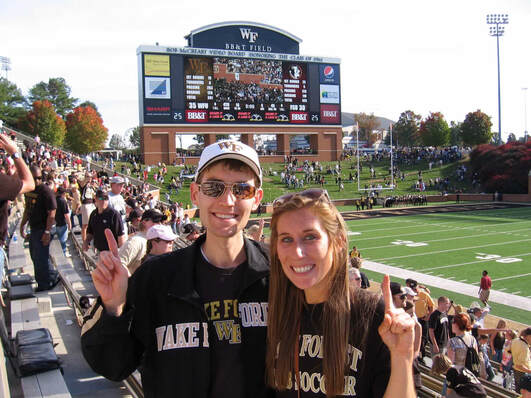
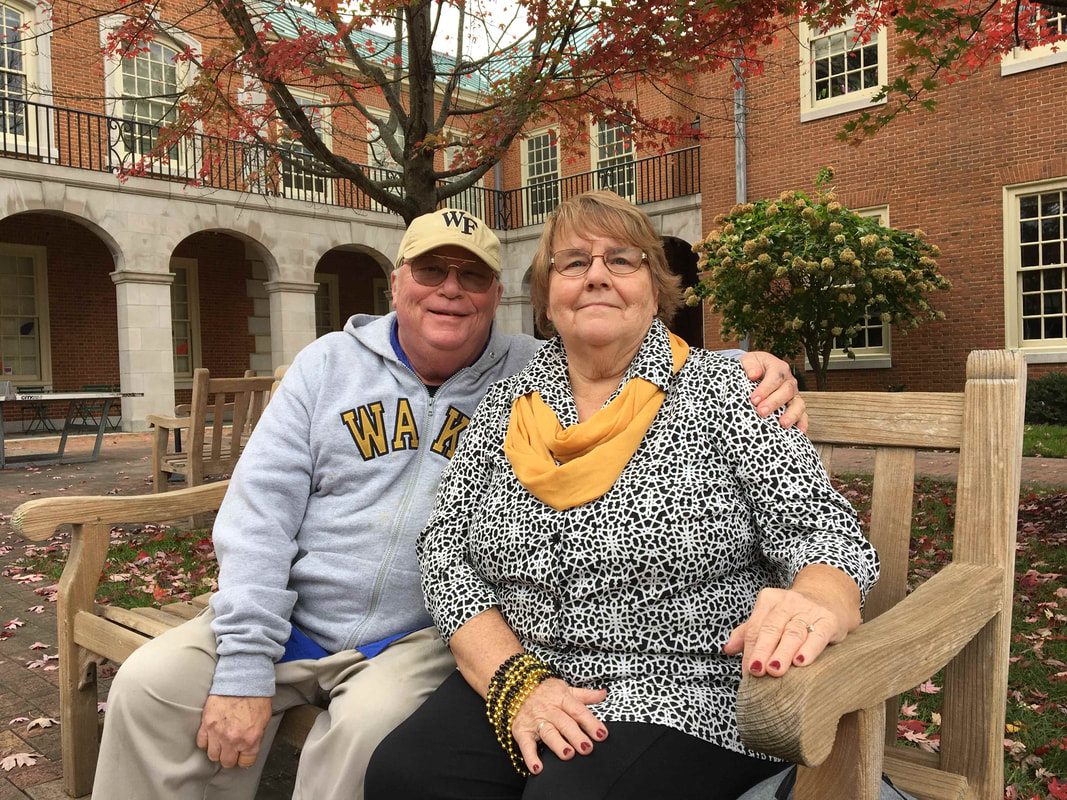


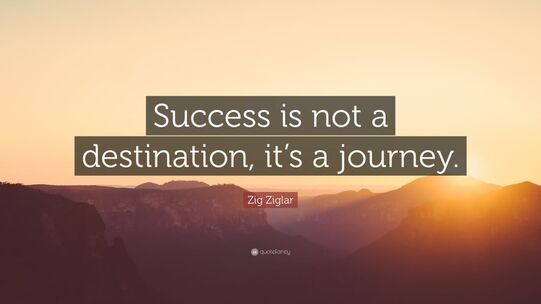
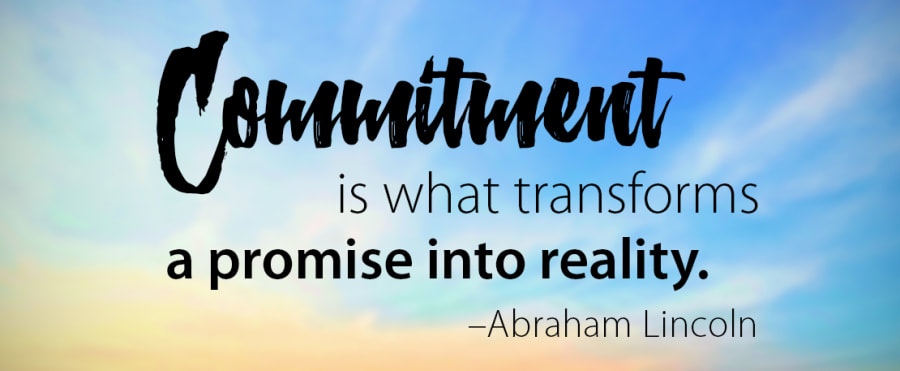






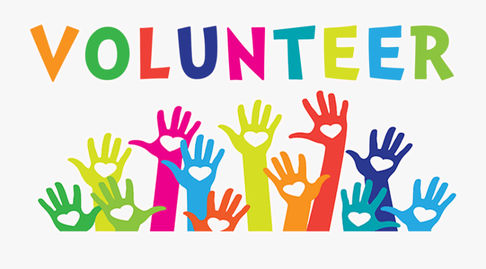
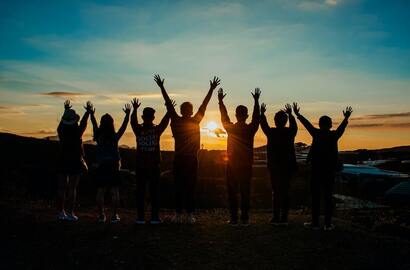




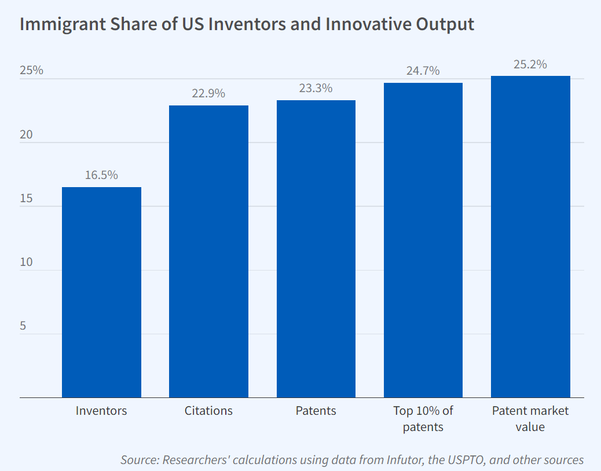

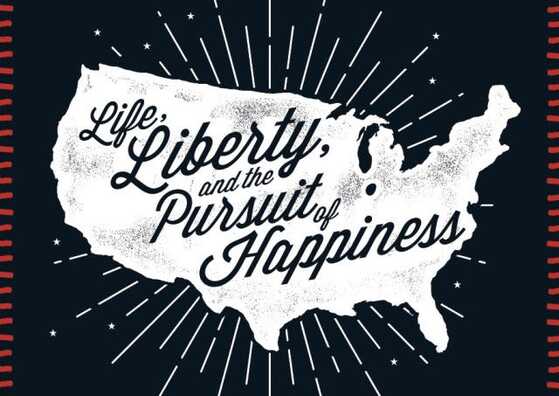

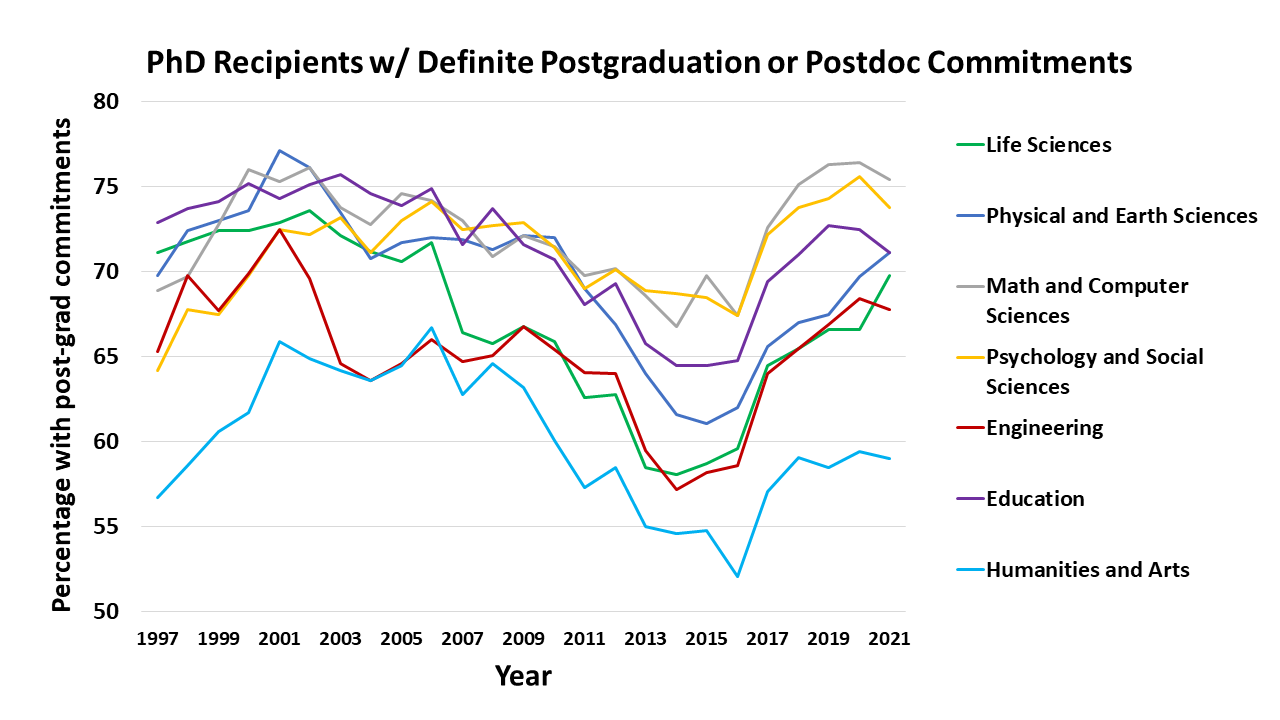
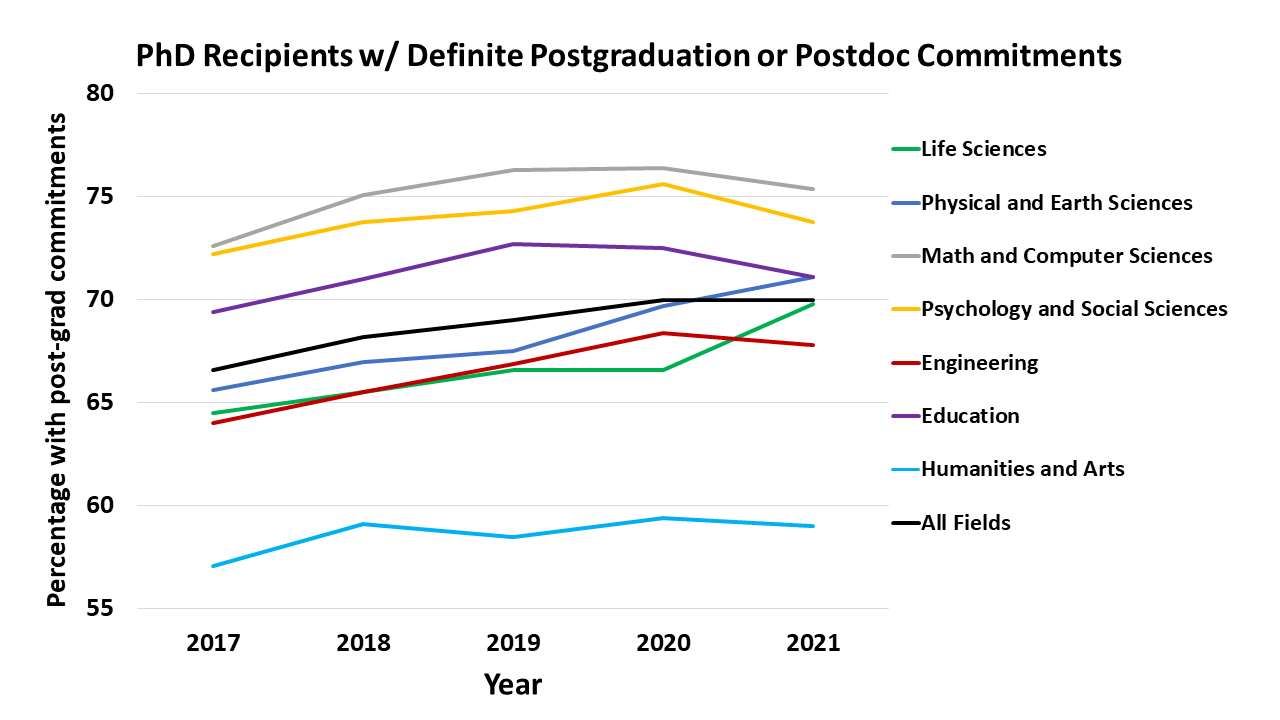
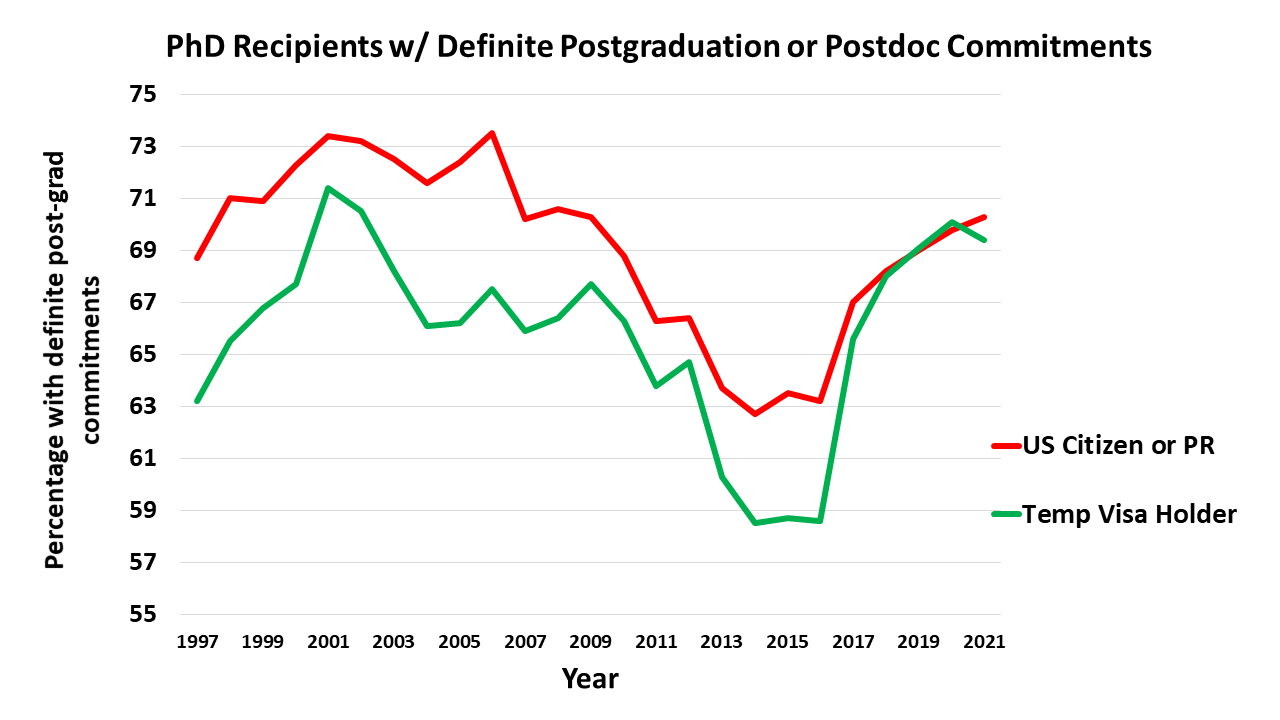
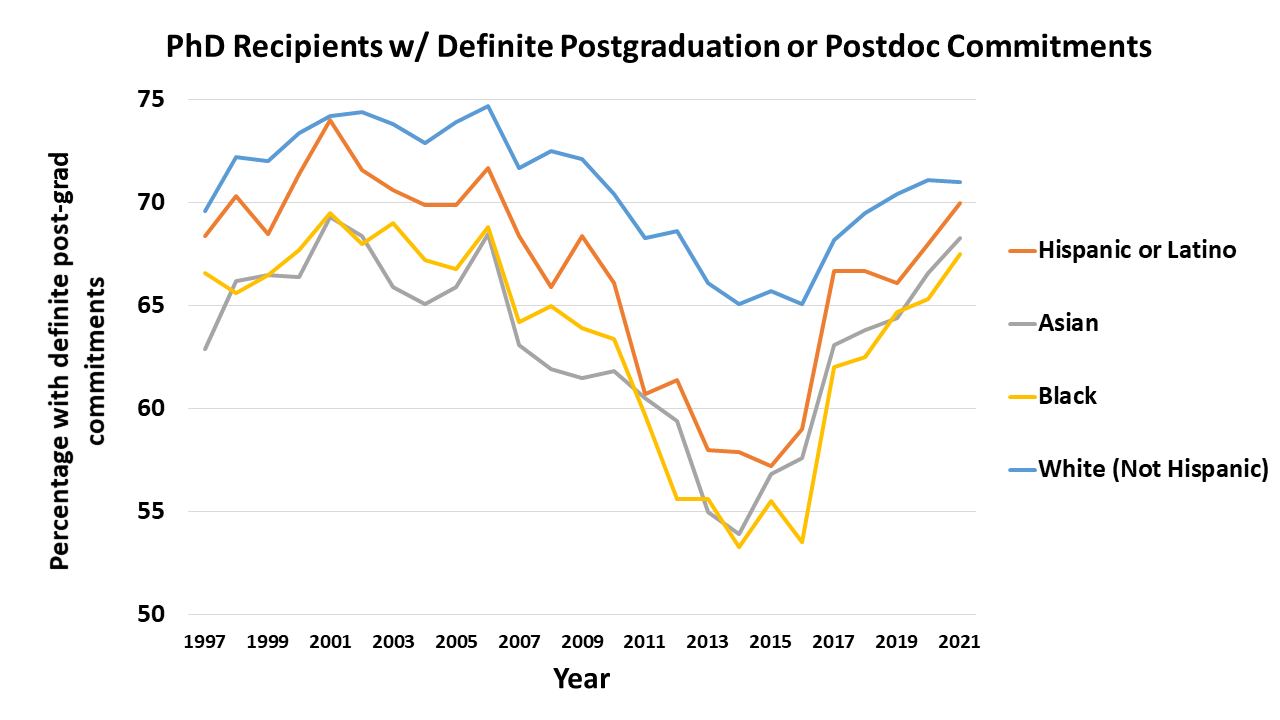
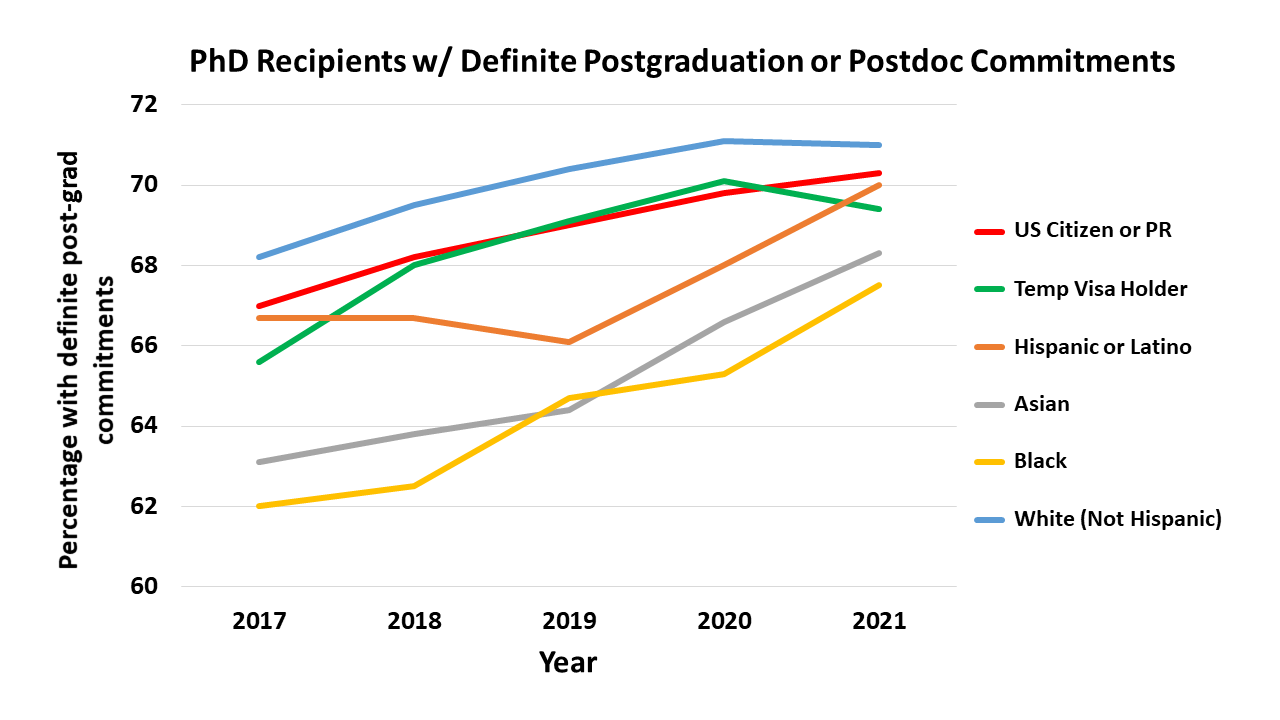
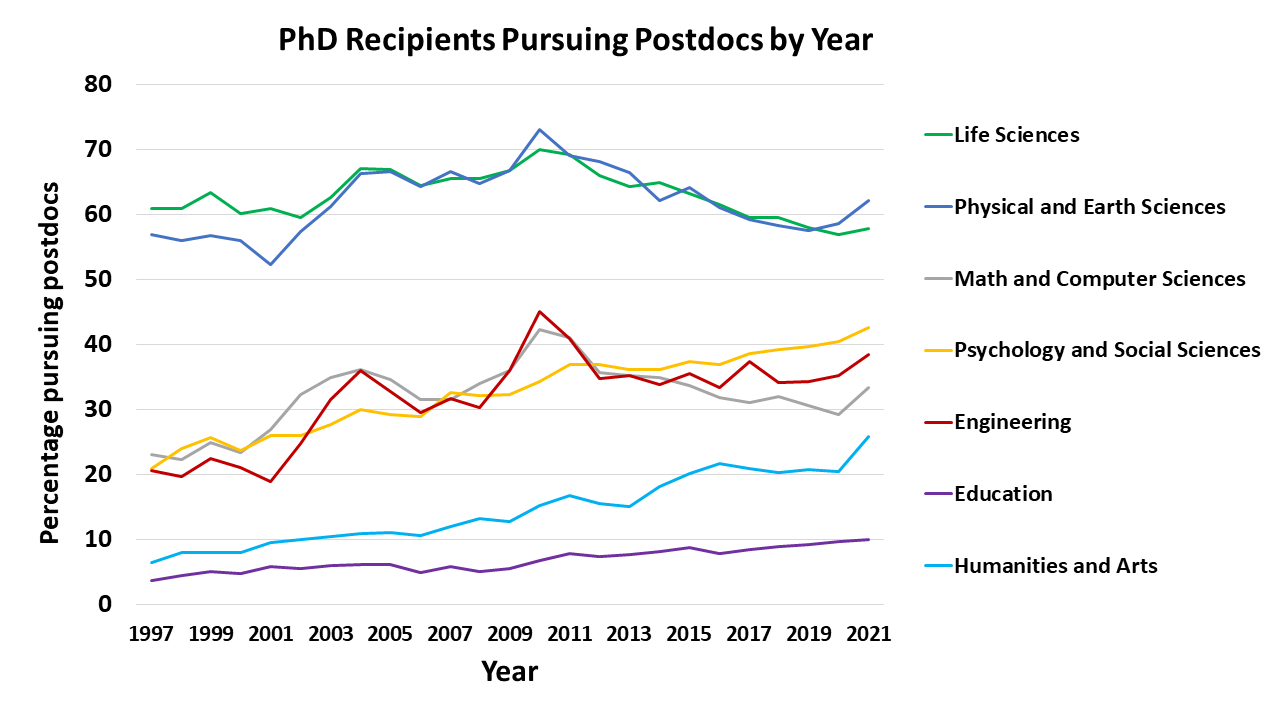
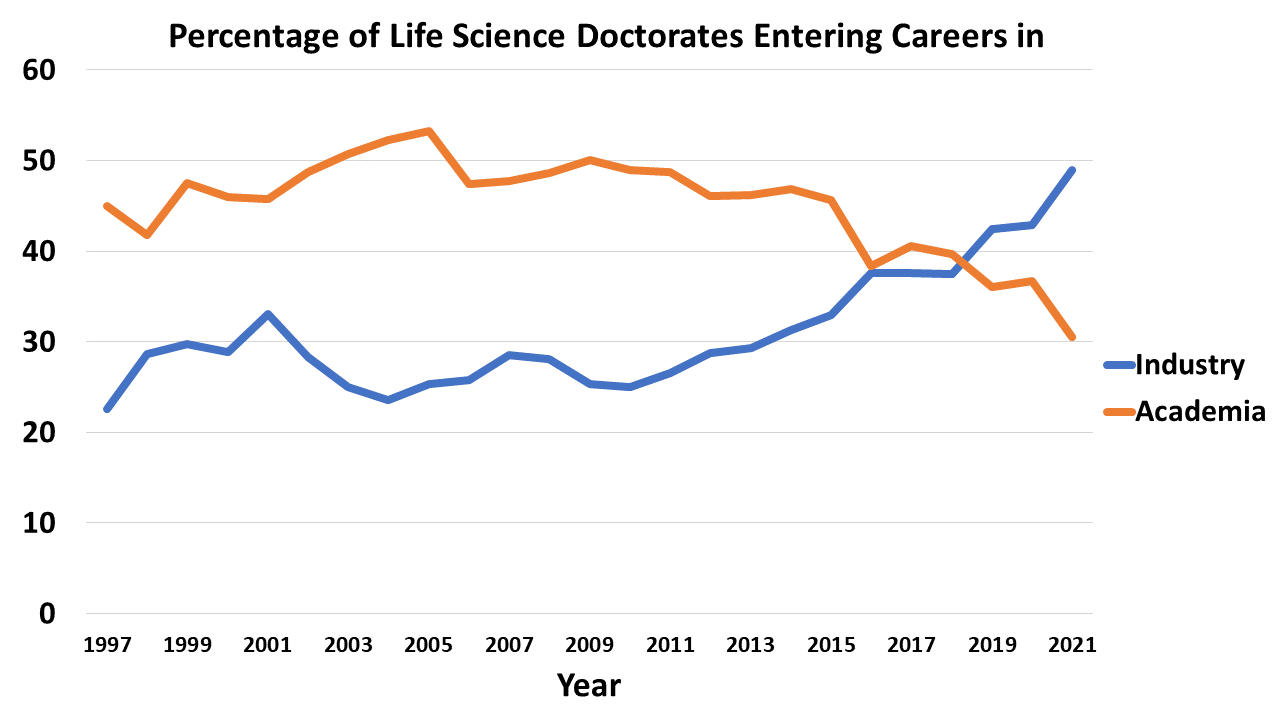
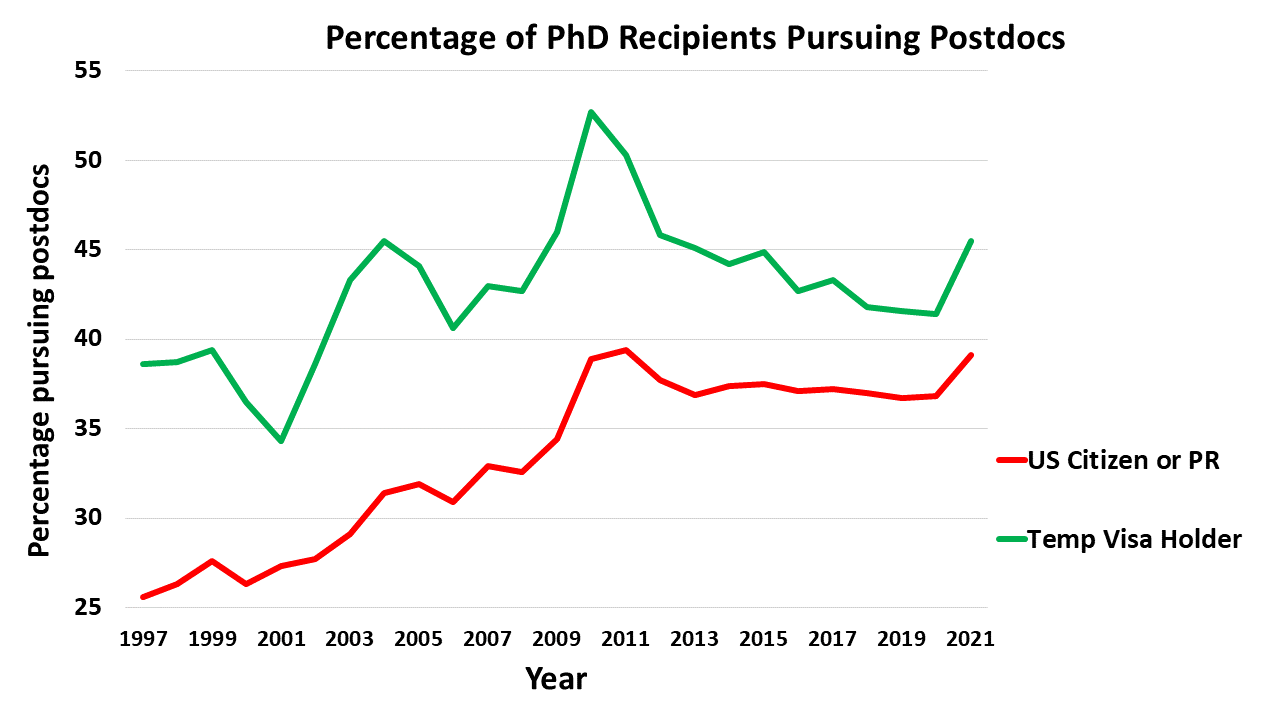
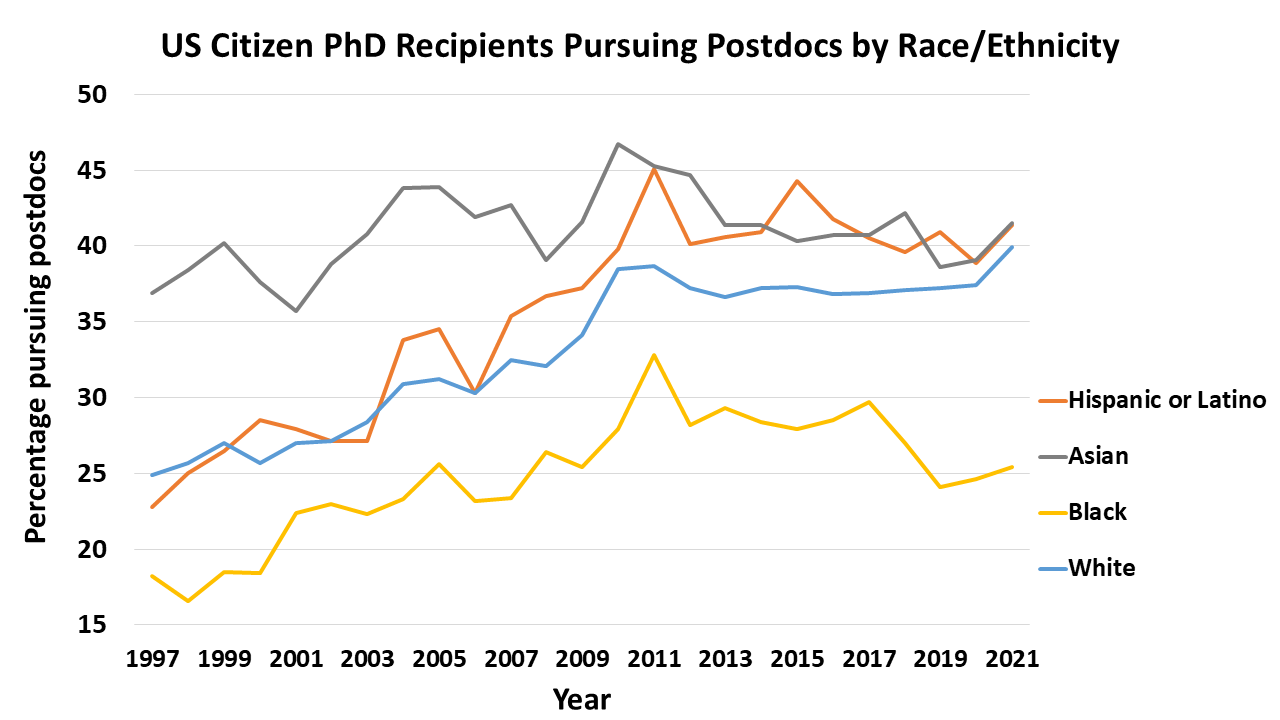
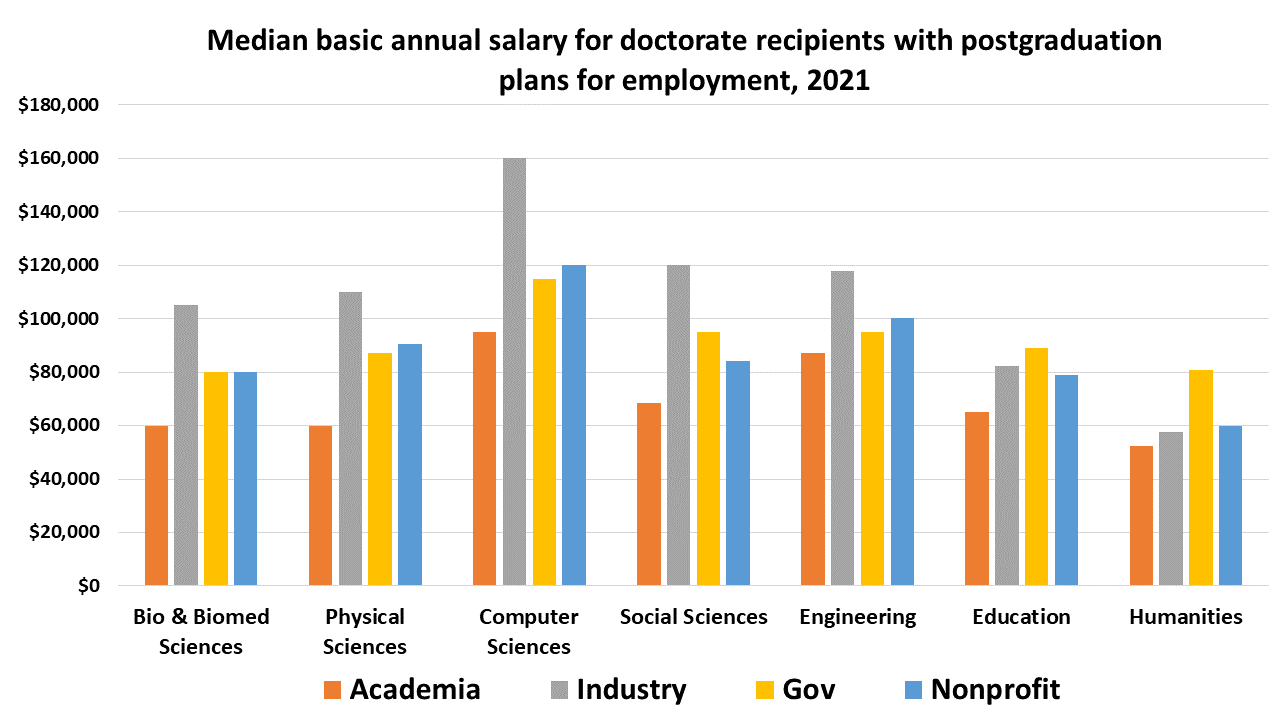
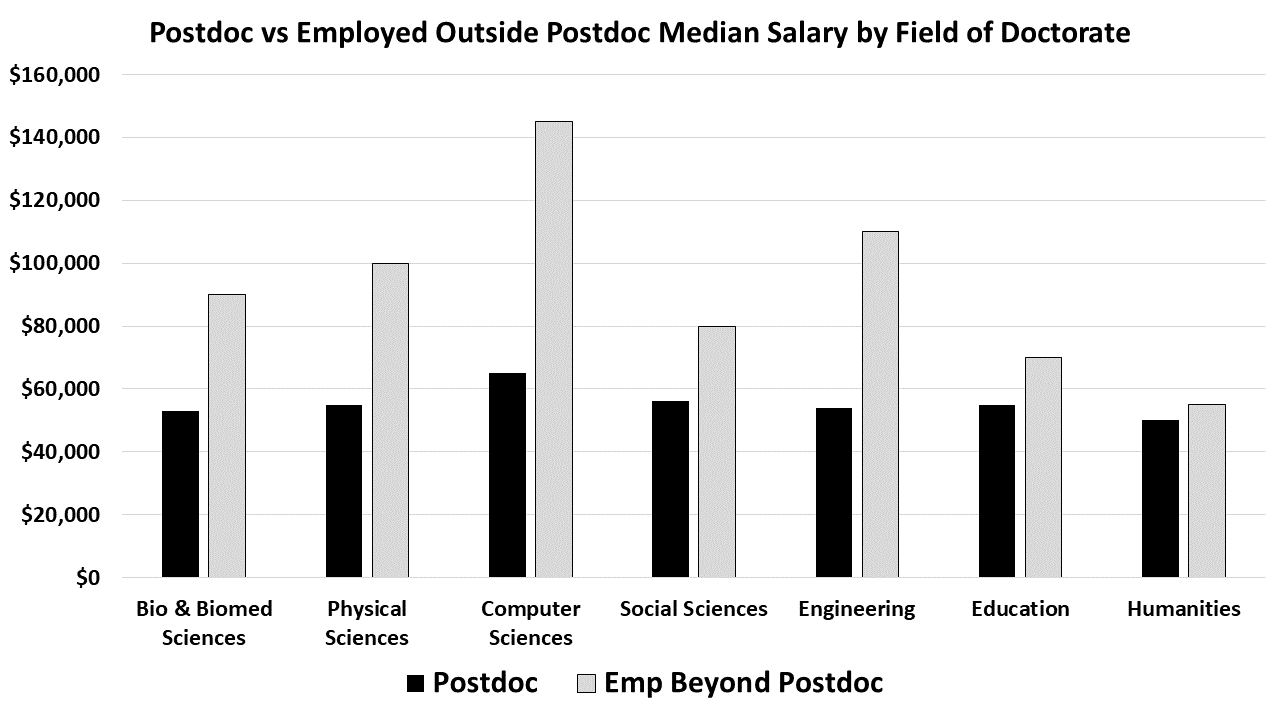
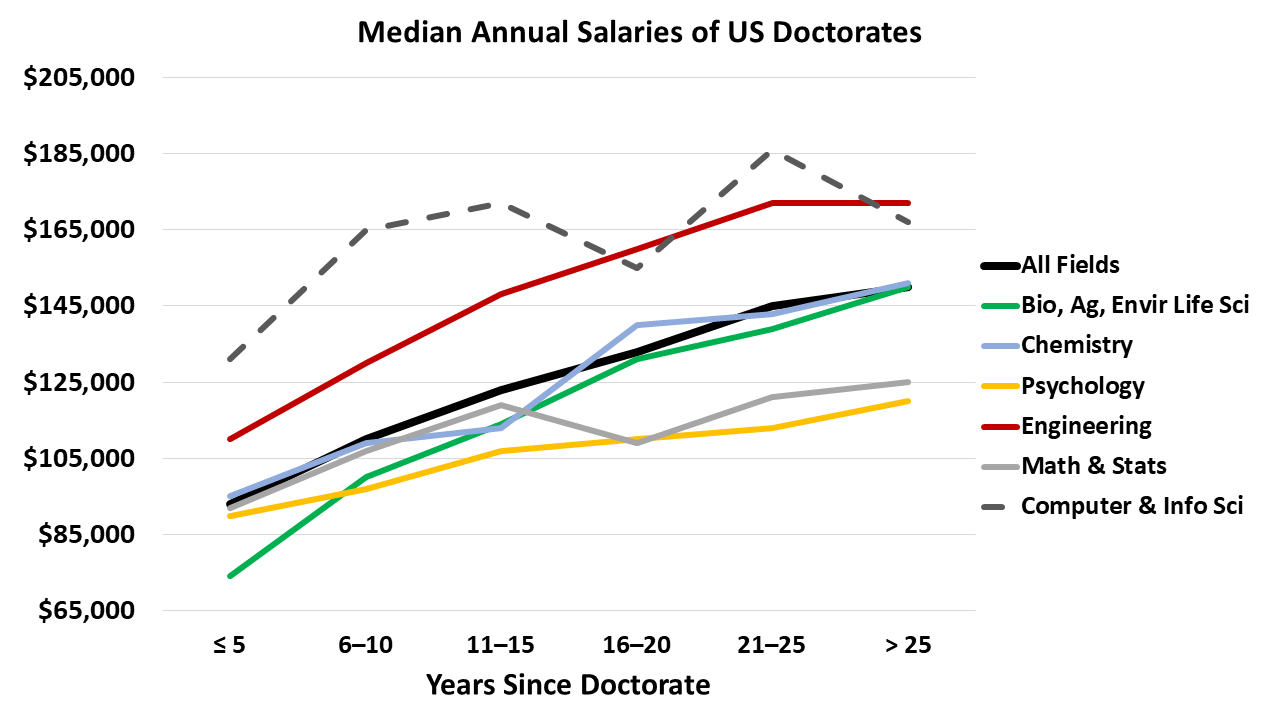
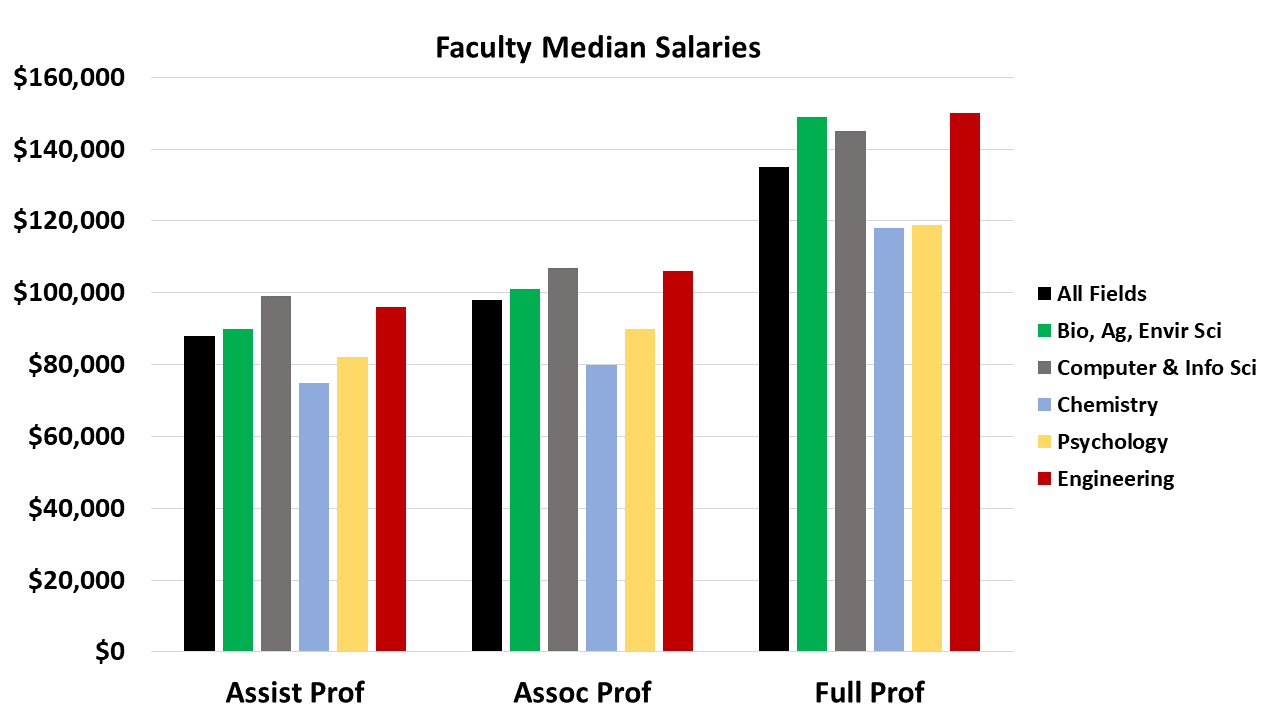
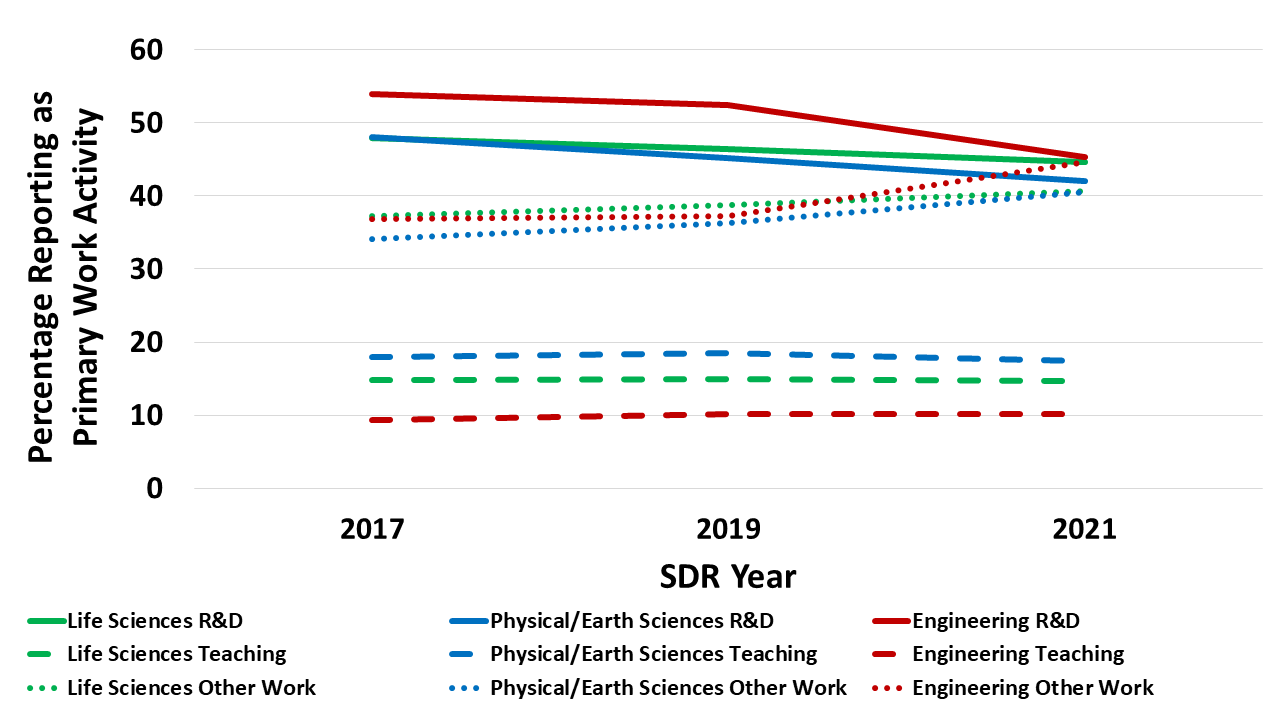
 RSS Feed
RSS Feed